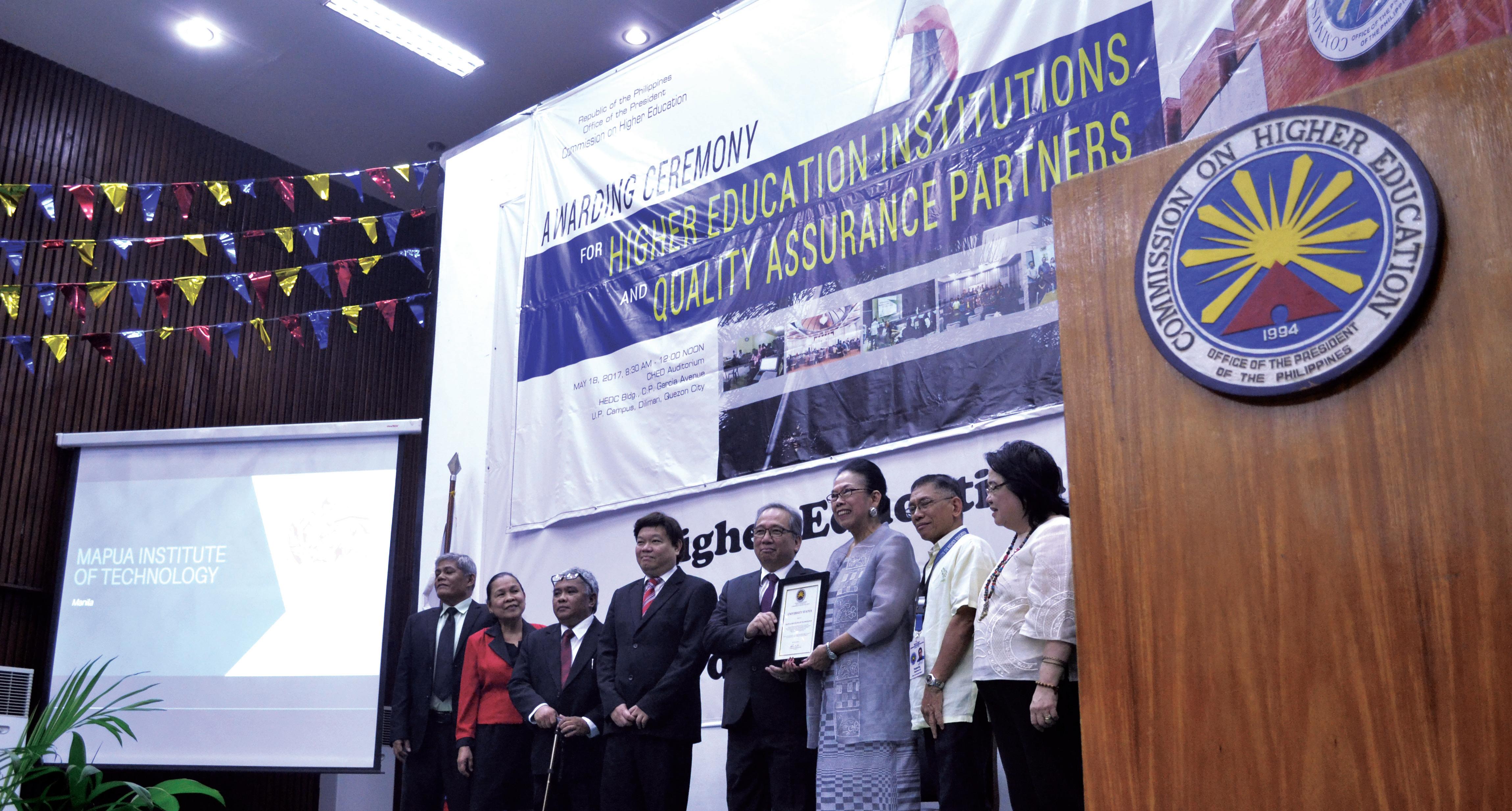

Mapúa Institute of Technology is now Mapúa University
by Sheina Marie I. Borreta, Czarrina Dianne L. Hernandez, Marc Jazer F. Esguerra & Maurine Claire F. Kim
One step closer to its vision to be among the best universities in the world, Mapúa Institute of Technology (MIT) is now Mapúa University (MU) through the Commission on Higher Education’s (CHED) en banc Resolution No. 379-2017, granting the institution university status. The status was granted during the awarding ceremony held last May 18 at the CHED Auditorium, Quezon City.
In a web release, Mapúa University President Dr. Reynaldo B. Vea said that the new status represents the culmination of Mapúa’s enhancement of educational quality. “We feel fulfilled and honored by this award. It behooves us to strive to reach greater heights,” Vea stated.
A climax of combined efforts
Mapúa went through a lengthy process to attain its university status. The process involved the development of Mapúa’s research capabilities and its improvement of the quality of education. These
refinements were in line with the qualifications of CHED for the application for university status, which included the requirement of having at least five programs in independent fields of study. Because of this, Mapúa opened a number of programs during the past years. According to Vea, “Mapúa currently offers programs in engineering, business, sciences, social sciences, and information technology.”
Aside from offering different programs, Mapúa also had to develop its research capabilities. This was, according to Vea, “the longest and most challenging station.” Faculty members worked diligently to produce quality papers that gave merit to the academe. They were able to publish technical papers in international peer-reviewed journals, which was a big feat for Mapúa.
Additionally, CHED recognized Mapúa as a pioneer of ABET accreditation in the country, which also gave merit to the application for university status. Vea said, “CHED
TNB welcomes new Adviser, Editors
by Vincent Andre B. Ramirez & Kyrien Jewel Janeena L. Tabucan
As the Institute enters a new academic year, The New Builder (TNB) has acquired a new staff adviser and reshuffled the editorial board as the posts of Features and Sports editors have been vacated.
For more than a decade, TNB has been under the supervision of Prof. Benigno B. Agapito Jr. However, after being promoted to acting Dean of the School of Multimedia and Visual Arts (SMVA), the advisory baton has now been passed on to Mapúa SLHS Department of Psychology Prof. Armando J. Aguado. Aguado, who graduated from Mapúa with an AB Psychology degree in 2008, was a previous Editor-in-Chief of The New Builder.
In the editorial board, outgoing Sports Editor Chaos Jeremy Pichay has handed the position to Norman Delos Reyes, while Pichay takes up the long-vacant post of Managing Editor. On the other hand, graduating Features Editor Francis Bautista has designated Maria Anne Therese Fernandez to take his place.
According to delos Reyes, campus sports fans usually focus on basketball and volleyball, but the newly appointed sports editor plans to change that. “My plan is to give equal attention to each of our varsity teams,” Delos Reyes stated. “It’s time to uplift the whole Mapúan sporting community as a whole,” he added.
Furthermore, the new editors are planning to make major adjustments to the paper’s writing style. “I want to promote artistic freedom when it comes to the angle and writing style of the writers without crossing the boundary of creative writing,” Fernandez stated.
With these changes to The New Builder’s organizational structure, the school paper expects to further improve its relevance and capability in the coming months. “I intend for TNB to be a modern, relevant, and dependable source of information that our readers can rely on,” Aguado explained.
recognized that Mapúa is serious about all of these.” He also stressed on the legitimacy of Mapúa’s endeavor towards the grant, “It is not like putting something cosmetic and then applying for the university status. It took years and years for this to happen. We put in a quality assurance system and we go for value.”
Still moving forward
Although Mapúa has reached a pinnacle, Vea says that it does not intend to stop there. As a university, Mapúa looks forward to even further improving its research capabilities, as well as the quality of Mapúan education. “There is an institutional plan for Mapúa that will last until 2020,” Vea mentioned, highlighting the continuous improvement of Mapúa University.
Proving its dedication to continuous quality improvement, Mapúa took a significant step forward in its quality education through the attainment of university status. “For the institute itself, it can lead to big grants for research and
innovation, and for development. Of course the stature of the school, nationally, will also affect our drive for internationalization,” said Vea on the local implication of the grant to the academe.
New name, new look
According to the University President, the upshot to its students and graduates of being granted university status is that they will be accorded proper stature internationally. “For many countries, the difference between an institute of technology and a university is very distinct in practical terms,” Vea said, before giving an example, “If you are a graduate of an institute of technology, you may be given a technician kind of job. However, if you are a graduate of a university, you can go for engineer status.”
Further, “We wanted to retain ‘Mapúa’ because it’s a good name, and we wanted the word ‘University’ because we want our graduates to have that advantage,” Vea said, insisting that, “to call yourself a university means something abroad,
and even here.”
Mapúa has applied the new name to its social media handles and even its logo. The 92-year old logo of the academe has gone through a minor change for the meantime as Dr. Vea shares that there are plans to change the logo to have a more “international” look. “We are thinking of changing that to something that will suit us, para mas international look siya. I hope that it will look good. If we do get a good one, we will unveil it in July,” Vea said.
In addition, the University President also hinted at a possible design contest for the university logo. “I thought about the contest (for the logo), to open it to everybody. We can open it up. But if we have until July, it’s possible to have a contest,” Vea mentioned. Interested Mapúans can follow Mapúa’s official online channels on Facebook and Twitter, as well as The New Builder’s online channels, for updates around this development.
Radio Cardinal relaunches after hiatus
by Kyle Joshua P. Castillo & Pauline Kirby P. Cinco
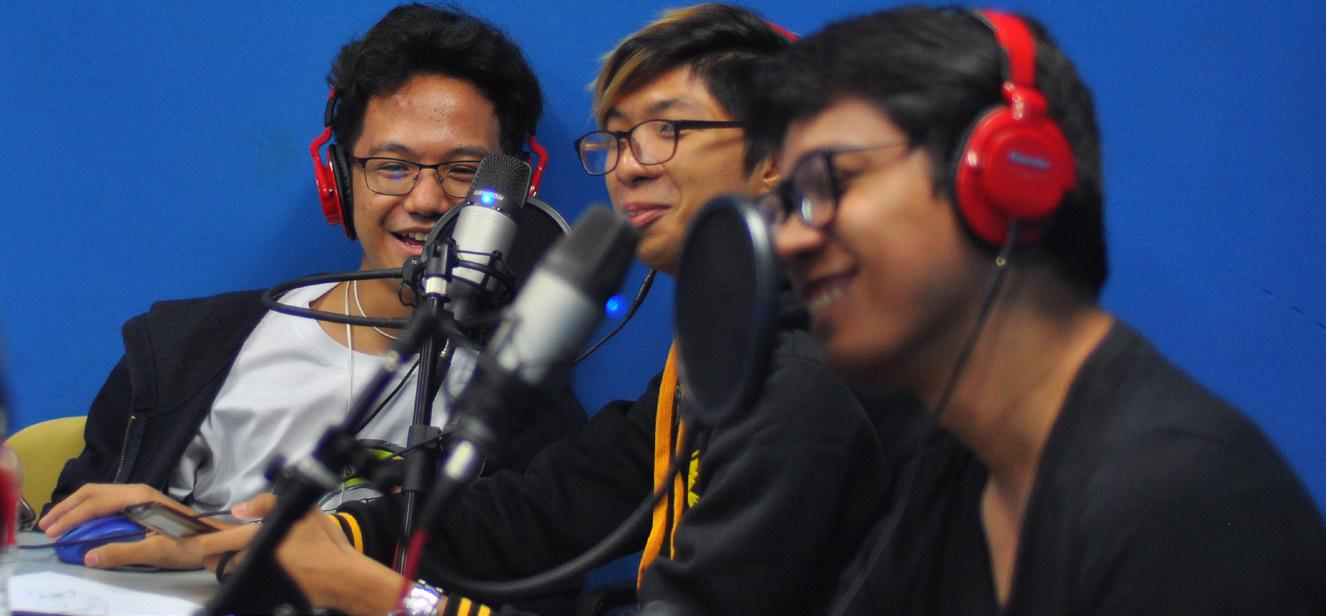
Radio Cardinal, Mapúa’s official internet radio station, returned last May 8 using Mixlr, an internet radio streaming site. The station aired 13 shows, as opposed to 9 shows during its first test broadcast last July 14-15 on its YouTube livestream.
Spearheaded by Professors Ma. Eliza Torres, program chair of BS Technical Communication, and Benigno B. Agapito Jr., acting Dean of the School of Multimedia and Visual Arts (SMVA), Mapúa Radio Cardinal (MRC) was set up to further
bolster the identity of Mapúa. “Strengthening our identity means bringing people together – students, faculty, employees, alumni, and other stakeholders – giving them a common platform for information, entertainment, and engagement,” Torres stated.
After a month-long online and live audition process, 14 disc jockeys, 5 of which are regarded as understudies, and 4 writers, were welcomed to the MRC team. Those who were not able to make it were nevertheless given the chance to
join any of the 4 committees within the MRC, namely: Program (which involves radio programming and writing), Marketing and Creatives, Audio (which calls for expertise in the technical aspects of radio procedures), and Logistics and Documentation.
Presently, the radio station’s focus is making their presence felt in social media, highlighting Mapúan life and culture, and disseminating news related to Mapúa. However, Radio Cardinal is also looking to expand its horizons beyond the school in the near future. “We are thinking of growing into a full-fledged FM radio station. To do this, we have lined up a series of trainings for the members of the organization, and have started building our professional networks”, Torres explained.
Radio Cardinal airs every Monday, 7:50AM-9PM, and will expand their airing time upon the completion of the organization’s radio booth. Membership to the radio station is not exclusive to students; faculty and admin staff are likewise invited to join.
Once in a lifetime. CHED Chairperson Patricia B. Licuanan, PhD (3rd from right) and Mapúa President & CEO Dr. Reynaldo B. Vea (4th from right) officiate Mapúa’s elevation to university status. Photo by Keith Marie R. Dela Cruz
Good vibes on air. From left to right: Radio Cardinal RJs Ray Daniel Giron, Richard Vergara, and Kim Fajardo deliver their segment titled ‘Uncased’. Photo by Aaroh Jon Pichollo Q. Torreses
Mapúa profs dominate int’l MSE conference
by Kyrien Jewel Janeena L. Tabucan
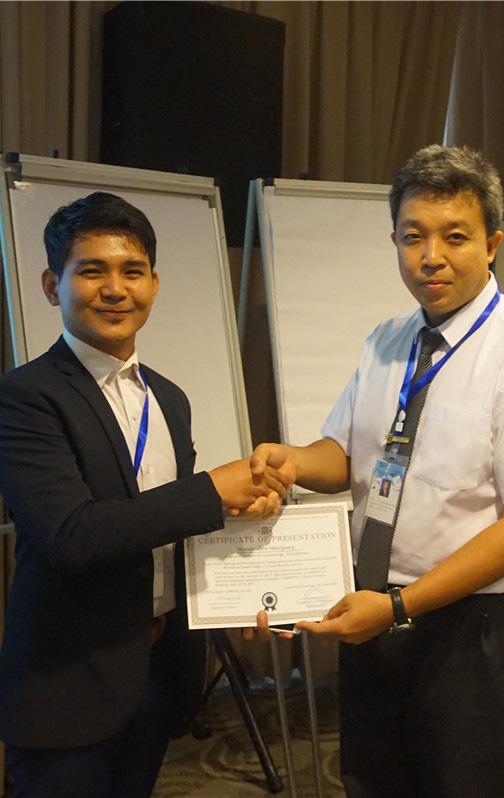
Materials Science and Engineering (MSE)
professors Engr. Ruth R. Aquino and Engr. Menandro C. Marquez, as well as Biological Engineering (BE) professor Engr. Larry T. Reyes, each won an award for Best Oral Presentation at the 2nd International Conference on Materials Engineering and Nanotechnology (ICMEN) held in Kuala Lumpur, Malaysia last May 12-14, 2017.
ICMEN is a notable gathering for professionals, professors, researchers, and students, engaged in the field of Materials Engineering and Nanotechnology. This conference was made to realize the vision of creating an event to encourage collaborations in both the industrial and academic platforms.
A total number of 38 papers were presented by the delegates from various countries such as Malaysia, France, Korea, Russia, Indonesia, China, Taiwan, India, Saudi Arabia, and Iran. The conference was divided into 4 sessions, and representatives of Mapúa University won the award for Excellent Oral Presentation in 3 of these sessions.
The first session was about Composites and Nanotechnology. Engr. Marquez won the award
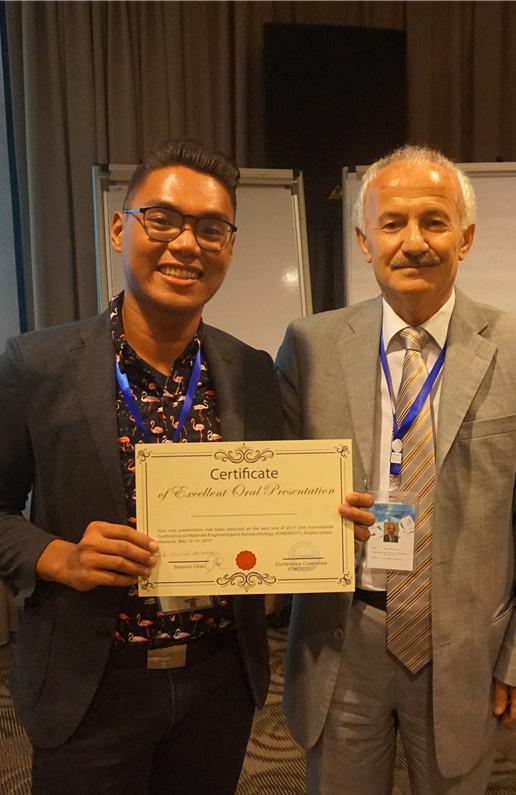
for this session by presenting a thesis paper he co-authored with his student entitled, “Optical and Morphological Characterization of Sonochemically Assisted Europium Doped Copper (I) Oxide Nanostructures.”
This was followed by the presentation of Abdul Rahman Mariscal, a recent graduate of Mapúa’s MSE program. He showcased his own thesis paper, “Evolution of Cobalt Oxide Nanostructures on Glass Substrate via Two Step Solution Route Synthesis” under the category ‘Physical and Chemical Properties of Materials: Methods and Experiments’.
A session which discussed ‘Material Behavior Analysis: Experiments, Modelling and Measurement’ was the third installment of the conference, where Engr. Reyes was awarded Excellent Oral Presentation for presenting “Biocomposites Based on Cellulose Acetate and 12-Aminolauric Acid Modified Montmorillonite”, a research he co-authored with former students in the program.
The fourth and last session tackled ‘Material Processing and Preparation’, where MSE’s very own coordinator, Engr. Aquino,
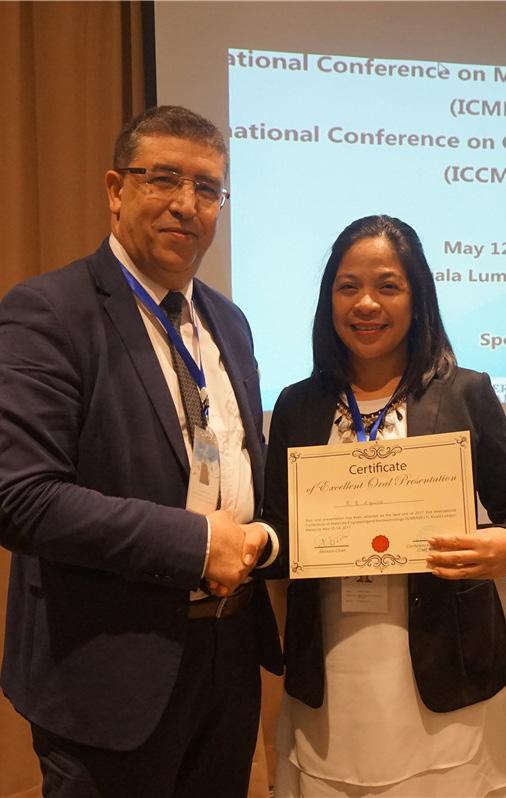
won the award by presenting a paper she co-authored with her students entitled “Thermal Treatment Temperature and Time Dependence of Contact Angle of Water on Fluorinated Polystyrene as Hydrophobic Film Coating”.
Engr. Aquino infers that “It is important that we attend events like this one because we go for global recognition, and it is beneficial to the students in a way where it will aid them immensely in the competitive world of engineering.”
As for the field of MSE as a whole, Engr. Marquez thinks, “In materials science and engineering, we rediscover the materials of the past, innovate the materials of the present, and continue to seek for the materials of the future to attain the ultimate goal of being sustainable.”
“Don’t be afraid to submit your papers to international conferences since they could provide the platform where you can showcase your studies,” said Marquez, as he encouraged more submissions from students to be made to similar conventions.
After ICMEN, the professors have hinted at plans to likewise submit and present more papers at summits in Japan, Korea, and Sweden.
Mapúa reigns through four engineering licensure exams
by Nicholle Kim T. Fontanilla & Sheina Marie I. Borreta
Mapúa once again upheld its status as one of the top performing schools in the country by garnering the top spots in four (4) different board examinations held last March and April this year.
Lording over EE, ECE, ECT boards
A total of 11 Mapúans from the School of Electrical, Electronics, and Computer Engineering (EECE) achieved the top 10 spots in the recently concluded Electrical Engineering (EE), Electronics and Communications Engineering (ECE), and Electronics Technician (ECT) licensure examinations held last April.
In the EE board exam, Engr. Harold Gil Singson Navarrete landed 6th place with a rating of 88.85, the only Mapúan engineer to become a topnotcher in the examination.
For the ECT licensure exam, Joshua Maurice Plameras clinched 1st place with a rating of 92.00, John Anthony Bernardez and Carlo Enrico Salvador at 2nd place with a rating of 90.00, and John Harold Antonio, Noel Jonathan Baclao, Renz Christian Bagaporo and Erika Janelle Villanueva at 3rd place with a rating of 89.00.
In the ECE licensure exam, Engr. Aaron Polancos snagged 1st place with a rating of 88.80, followed closely by Engr. Francis Bautista at 2nd place with a rating of 88.30. Garnering 4th and 8th place were Engr. Renz Christian Bagaporo and Engr. Maria Cassandra Gae Firme with ratings of 88.00 and 86.30, respectively.
According to Engr. Bautista, it was Mapúa’s Outcomes-Based Education (OBE) that gave him and his fellow board passers the tools necessary to condition themselves for the examinations. “I became more skilled in analyzing and solving problems and I learned how to manage my time more wisely,” he stated.
Exceling in 2017 ME boards
Meanwhile, 2 Mapúans brought honor to the School of Mechanical and Manufacturing Engineering (MME) when they placed 7th and 10th in the Mechanical Engineering licensure examination conducted last March.
7th placer Bernard Lou Buquiz and 10th placer Denzel Maxino obtained a rating of 86.85 and 86.20, respectively. First time takers of the ME licensure examination obtained a 100% passing rate, while 7 out of 9 re-takers passed as well.
According to Program Coordinator Engr. Igmedio Isla Jr., the support given by the faculty made a huge impact in helping students to pass the exams.
“The students were able to have a better grasp on the topics, resulting in better retention. It only proves that the teaching method of the faculty is effective,” Isla expressed.
Dreaming big
This year, the Institute achieved a record 100% passing rate in the ECT board examinations, and garnered passing rates of 97.26%, 81.48%, and 68.87% in the ME, EE, and ECE board exams, respectively. These passing rates mark a significant improvement from last year’s ME board exam performance of 80.30% and ECE board exam passing rate of 67.10%.
ECT licensure examination 1st placer, Engr. Plameras, was more than willing to share some advice with his fellow Mapúans, saying that his achievement was a result of a mindset of excelling in academics and in life in general. He added that one has to move out of his or her comfort zone and face challenges head-on.
“Always trust in yourself and do not be afraid to take risks,” Plameras imparted. “Dream big, keep aiming high, and never settle for anything less than you think you deserve.”.
Team Cardinals return from two SEM stints

Mapúa’s own Team Cardinals recently competed in both the local and international stages of the Shell Eco-Marathon (SEM) 2017 last February 2-5 at the Clark International Speedway in Pampanga, and March 16-19 at the Changi Exhibition Center in Singapore. For SEM 2017, the team prepared two vehicles, Aguila and Hiraya, for the prototype and urban concept categories, respectively.
On your marks, get set
For this year’s SEM, Team Cardinals unveiled their newest urban concept eco-car, Project Hiraya. According to the team adviser, Engr. Sherwin S. Magon, the team’s latest vehicle
was a project four years in the making. “It [Hiraya] took two years of development, one year for research, and a year for fabrication. It was an achievement for the team for it was more tedious to make, compared to the Prototype category,” Magon explained.
For Project Aguila, upgrades were done on the vehicle based on the results of last year’s SEM competition, where Aguila placed 2nd in the Prototype Gasoline Category. “Aguila’s steering system was changed to make adjustments easier, its propulsion system was improved for better fuel consumption, the dynamics were adjusted for better rolling resistance and the electricals as well, for easier
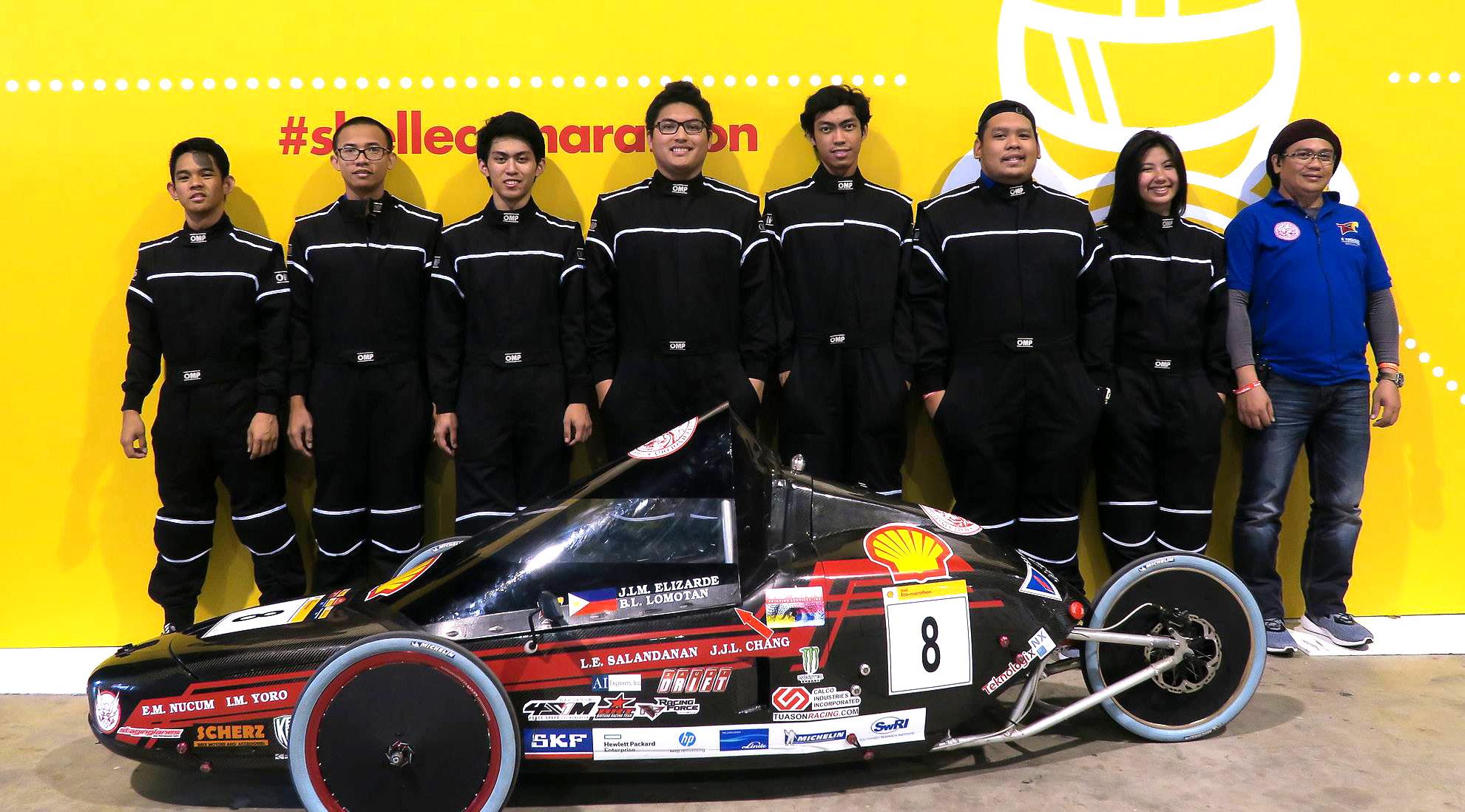
troubleshooting,” Magon elaborated. Going the distance
In the Philippine stage of SEM 2017 held in Mabalacat, Pampanga, Team Cardinals bested 30 student teams by clinching the top spot in the ‘Prototype – Internal Combustion Engine’ category with Aguila’s official record speed of 414.76 km/L. Additionally, Hiraya also clocked in an unofficial record of 136.84 km/L in the ‘Urban Concept – Internal Combustion Engine’ category during the Driver’s World Cup practice run. They, however, fell short in the international stage of the competition, with Aguila and Hiraya achieving 12th and 14th place in their respective categories.
Despite returning to the Philippines without qualifying for the international stage, the Mapúan community remains proud of Team Cardinals’ local achievements for both Aguila and Hiraya. The team collectively summed up the experience by saying, “Being able to bring glory to the name of Mapúa, this is the whole Shell Eco-marathon experience. This is what drives us to work. This is what makes us Team Cardinals.”
After the dust settles
Returning with lessons learned from their Singapore stint, the team realized that there are needed improvements for Aguila and Hiraya to be the best in terms of fuel economy.
Specifically, Engr. Magon pointed out that both eco-cars need more upgrades in the areas of design and fuel efficiency for the following year’s competition.
As part of the team’s continuous improvement policy, Team Cardinals is currently open to aspiring applicants for apprenticeship. The team hopes for more manpower who are willing to contribute novel ideas in preparation for next year’s Shell Eco-Marathon competition. “Unlocking the potential of students to further improve the vehicles has been the driving force behind every Team Cardinals student member since 2010,” Magon stated.
by Sheina Marie I. Borreta & Vincent Andre B. Ramirez
Gears and guardians. Team Hiraya (left) makes its debut in SEM 2017, and Team Aguila (right) returns to set an impressive official record in the Philippine stage of SEM 2017. Photos provided by Amal Amin.
Award-winning deliveries. Prof. Marquez (left), Prof. Reyes (center), and Prof. Aquino (right) receive their awards for Best Oral Presentation at the recently concluded ICMEN in Kuala Lumpur, Malaysia Photos courtesy of ICMEN.
‘ Collectorella ’ and the changing face of Mapúan film
by Pauline Kirby P. Cinco, Faye Lorelie N. Reyes & Renzel Gene G. Reyes
CineMapúa wrapped up its 15th year of operation last February 13 with an Awarding Ceremony that took place at the Mapúa Gym. Topping the Inter-collegiate category with ‘Best Festival Film’ was College of Saint Benilde’s (CSB) Kaming Mga Nakakulong, and taking home the All-Mapúan category’s equivalent of the award was Collectorella
With a total tally of 20 finalists split between an inter-collegiate category and a Mapúa-exclusive category, the horror flick Collectorella emerged as the clear winner in the latter category, garnering the following awards: Best Director (Juliano Nico Roxas & Ynoh Suarez), Best Actress (Barbara Ruaro), Best Cinematography, Best Production Design, Best Film Editing, and Best Screenplay. The film, with its outstanding visuals and mature themes, was testament to the School of Multimedia and Visual Arts’ (SMVA) Film, Arts, and Media Enthusiasts (FAME) student organization President Dexter Shinedrol Santos’ comment on the improvement of film ideas and innovative techniques in modern indie films.
Collectorella likewise represented the University in other inter-collegiate film festivals. The film earned several awards in CSB’s inter-collegiate indie film festival, CINESB: Special Edition, bringing home the Gold Award for best film, as well as the Outstanding Director Award, Outstanding Performance by an Actress Award, Outstanding Ensemble Award, Design Excellence Award, and Technical Excellence Award. Lastly, the film snagged the Best Cinematography Award in Far Eastern University’s (FEU) recently concluded film festival, CinePiyu, under the Inter-collegiate Narrative category.
According to Roxas, Collectorella was inspired by the electronic music genre vaporwave. “After we finished the rough plot I said to my co-director, Ynoh Suarez, ‘Pre, gawin nating vaporwave’ [Let’s make it a Vaporwave]. We clicked right away

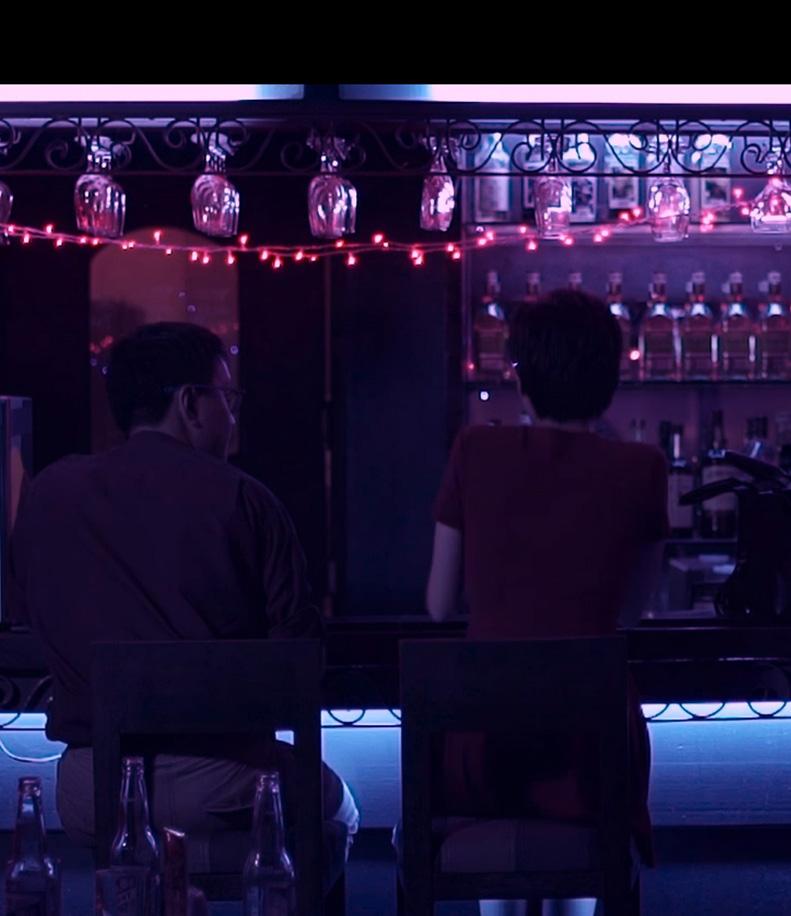
and more ideas came pouring out to make Collectorella what it is today,” Roxas explained.
Roxas also expressed his gratitude towards his hardworking team and to Barbara Ruaro and Jairo Delos Reyes who played the main characters in Collectorella. For Roxas, without his team, there would be no Collectorella to speak of. With great pride, he said, “I am so proud of our team and proud to be a filmmaker of this generation.”
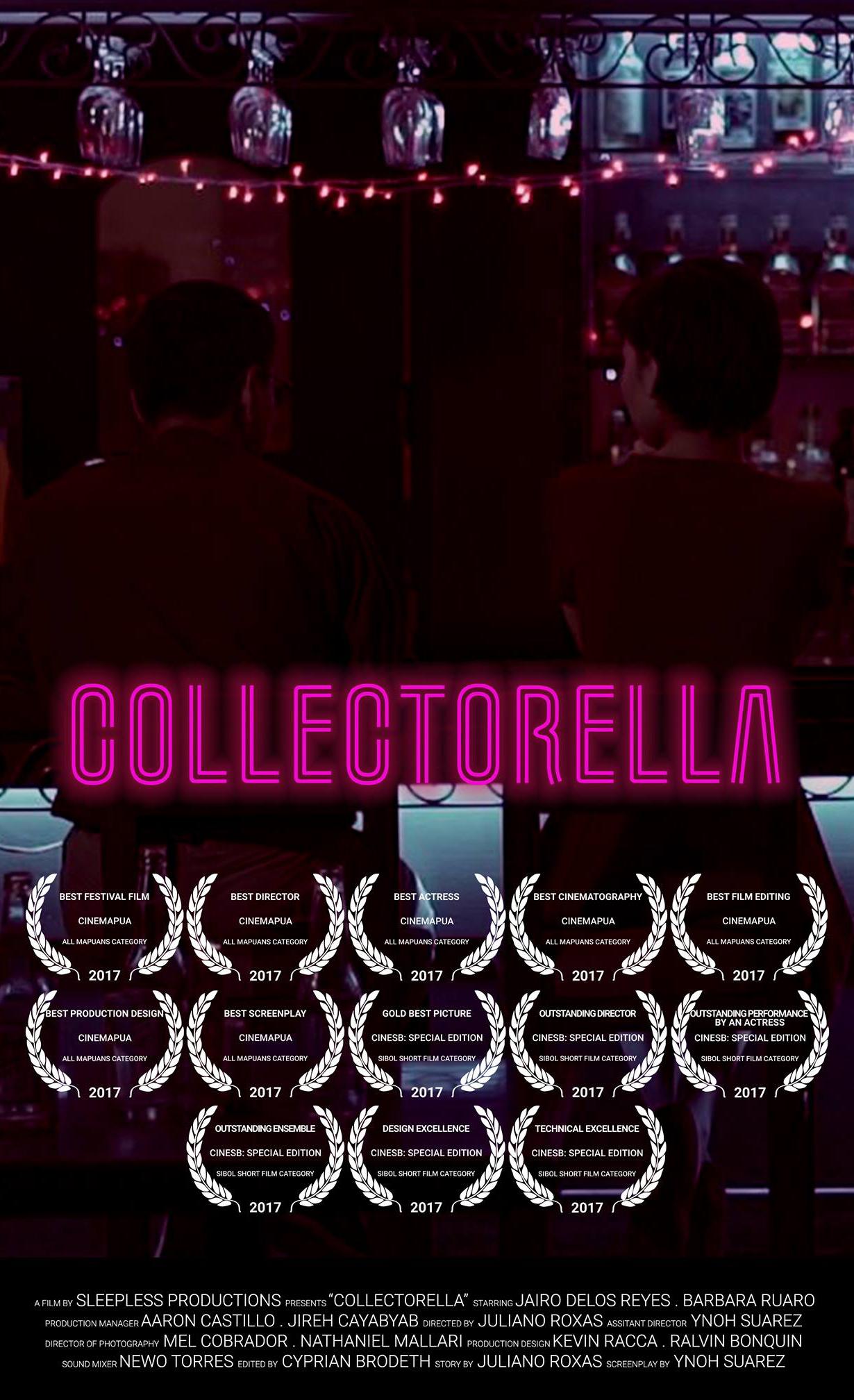
The flourishing of student film festivals can be attributed to the rise of independent quality films in Philippine cinema. In the recent Metro Manila Film Festival (MMFF), the line-up consisted of various indie films from both newcomers and established names in the industry. Advancing towards a rich and diverse industry is apparent in these movements, and competitions such as CineMapúa are clear efforts in
Balawis honored in 11th Hildegarde Awards
by River Arliss M. Lontok
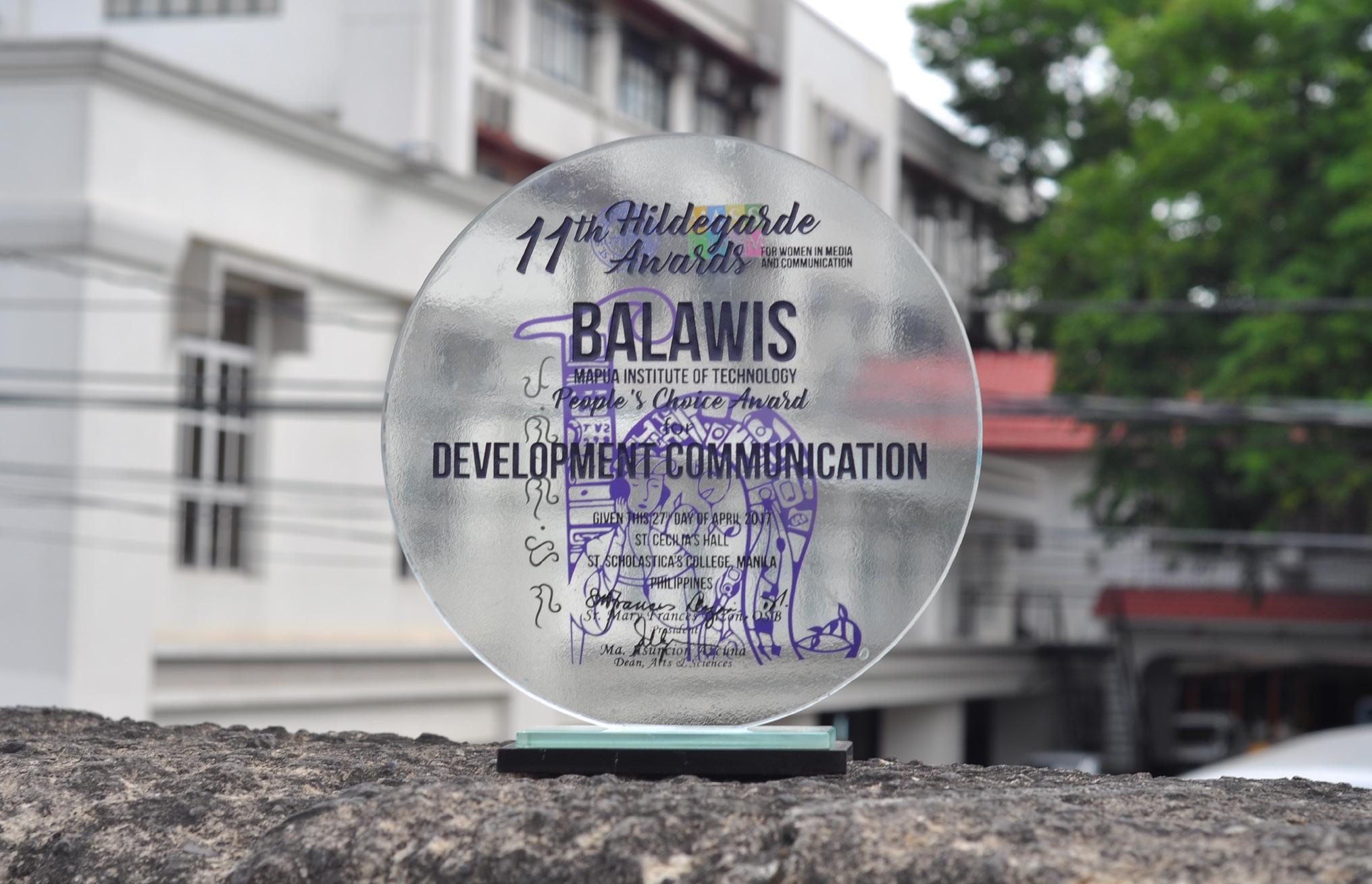
Balawis, an offshoot of Mapúa’s school paper, formerly named ‘The Builder’ during the Martial Law era, was granted the People’s Choice Award for Development Communication during the 11th Hildegarde Awards last May 6 at the St. Scholastica’s College Manila.
The award was given to Balawis for being one of the five prominent studentrun papers during the term of former Pres. Ferdinand Marcos. Due to Balawis having been defunct for more than three decades, former TNB Adviser and current acting SMVA Dean Prof. Benigno
Agapito, Jr. received the recognition on the paper’s behalf. In his acceptance speech, Prof. Agapito stressed the impact of journalism in the overthrow of the Marcos dictatorship. “Ang award na ito ay pruweba sa katapangan ng mga estudyanteng manunulat noong panahon ng Martial Law,” Prof. Agapito stated.
Since its inception in 2007, the Hildegarde Awards has honored exemplary women in Media and Mass Communication, as well as organizations who have contributed greatly to these two fields. Alongside Balawis, the
other student papers that received the People’s Choice Award for Development Communication were the Philippine Collegian of UP Diliman, Ang Malaya of PUP, Hasik of PLM, and Pandayan of the Ateneo de Manila.
The aforementioned publications became part of an ‘alternative-media’ movement which was created to counter the censored, pro-government propaganda of that time. Some publications changed their names to protect identities and to be able to express their fervent anti-government stance.

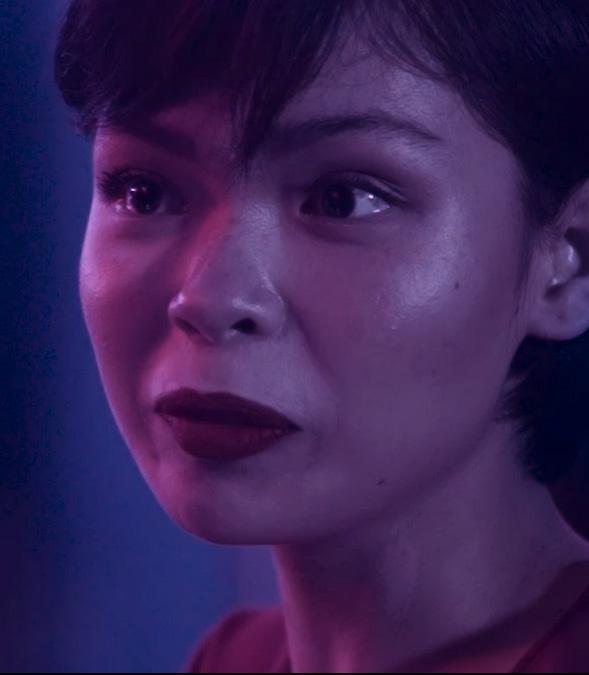
the adding of repertoire to modern Philippine cinema, while also giving Mapúa its own name in the industry.
“Cinemapúa can help them to fully develop their potential and capacity to become filmmakers someday,” shared
Prof. Benigno B. Agapito, Jr., acting dean of the School of Multimedia and Visual Arts (SMVA) and founder of Cinemapúa.
CineMapúa aims to provide more
prospects for aspiring youth and student directors to exhibit their mint thoughts through their films, just as Roxas did. Likewise, it aspires to refine the student filmmakers’ skills, and to contribute to the exponential development of Philippine film. “Keep on coming up, conceptualizing films for visual storytelling. You know that film is a very good venue for learning,” Agapito said.
Alfonso Yuchengco passes away at 94
by River Arliss M. Lontok
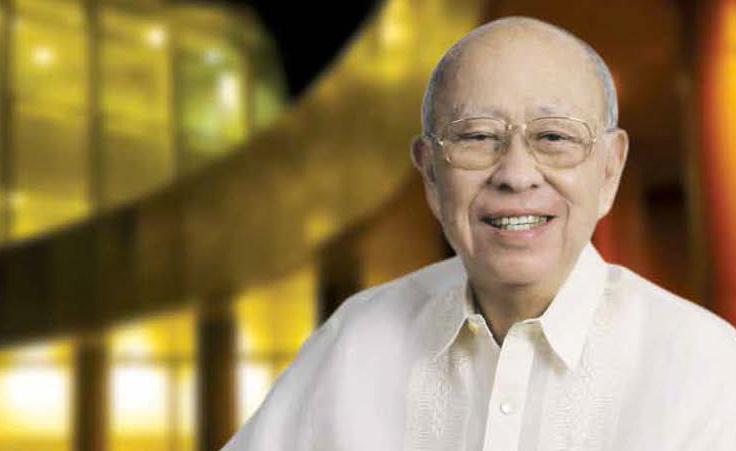
Ambassador Alfonso Yuchengco, the founding chairman of the Yuchengco Group of Companies (YGC), passed away last April 16 at the age of 94.
Yuchengco was instrumental in expanding the family business by setting up Great Pacific Life Insurance Financial, Inc. in 1954, which eventually became the life insurance arm of YGC. He also founded the Rizal Commercial Banking Corporation in 1960, and served as its chairman from 1963 to 1995 and afterwards, its chairman emeritus from 2016 until his passing.
He likewise served as the board chairman of several prominent companies, such as the Philippine Long Distance Telephone Company, the Bank of America Savings Bank, and Philippine Fuji Xerox, among others.
Apart from being the chairman of YGC, Yuchengco had a storied diplomatic history, having served as the country’s ambassador to China and Japan from 1986 to 1988 and 1995 to 1998, respectively. For the latter, he was awarded the Gold and Silver Star of the Order of the Sacred Treasure by the Emperor of Japan for his distinguished service.
Yuchengco also served as the Philippine Permanent Representative to the United Nations from 2001 to 2002, and held the post of Presidential Adviser on Foreign Affairs during the Arroyo administration.
The late taipan was renowned for valuing honor above profit, with Yuchengco once having stated “I would prefer to lose millions of pesos than to have my reputation tainted in any way.”.
Honored and humbled. ‘Balawis’ was The Builder’s response to Martial Law Era censorship. Photo by Aaroh Jon Pichollo Q. Toresses
Screengrab from Alchetron.com
In the Name of the Future Editorial
Reading through the comments section of the Profile Picture update of Mapúa University on Facebook, one would find a bunch of naysayers to the new change in nomenclature. Looking further, one may also find that these naysayers are graduates of the institute who seemingly have an irrational, and purely sentimental connection to the name Mapúa Institute of Technology. As part of a continuously progressing school in multiple fields of study, graduates and students alike must embrace change – especially if it is for the better – and not be controlled by something like sentiment.
After all, ‘Mapúa University’ is a clear compromise from having something completely new, because it retains something familiar. It is the most important word that is retained - the very name of the founder of this legendary school, and it is in this essence that the legend lives on.
These sentimental thoughts seem to be remnants of a past generation, one that may have thrived during the ‘Black Valentine’ event of 2005 – probably the most riled-up Mapúans have ever gotten since Martial Law. The motive behind this dark event was understandable; it was done to protest a complete change in name from Mapúa Institute of Technology to Malayan Colleges. It was done to prevent the loss of an identity that was earnestly sought after – the identity of a ‘Mapúan’. Who wouldn’t want to protect one’s identity and association with the widely recognized name of Mapúa?
If Black Valentine had not happened, the students of the time, and generations henceforth, would have lost the right to call themselves ‘Mapúans’. And the glory associated with that title would have faded to the cold passing of time. A legend would have turned into a myth.
However, the legend does live on, and so this mythical alternate scenario is not the case here anymore. Mapúa University is moving forward, while still taking the sentiments of a past generation of students into account, because they have made a valid point.
Another factor in the change of this name is words. One must agree that specific words can limit another person’s interpretation of a subject, and it can even misrepresent the parts of a whole. In other words, “university” is a word which encompasses everyone in an educational institution, including liberal-arts minded Mapuans in Intramuros and their commerce counterparts in Makati; as opposed to “technology”, which actually only represents those related to technical fields of study. Moreover, “university” is a stronger word than “institute”. Updated Filipinos may know of Mapúa’s elevation to the University level, but the rest of the world, especially big companies, may not be updated on such things. Hence, going to an interview as a graduate of a school which says it is a university, as compared to a graduate of an “institute” has immediate and immense advantages. The most important thing in job interviews is delivering a strong first impression. The name Mapúa University increases the chances of a good first impression. Plus, clarifying the change of name to an interviewer who may have heard of the old name could make for interesting small talk.
Another case to make is that it is not Mapúa Institute of Technology that instantly comes to mind when the acronym ‘MIT’ is uttered in foreign countries. One should admit that the truly universal ‘MIT’ is the Massachusetts Institute of Technology, the school of which Mapúa was based off. There are other schools around the world that pride themselves in having the acronym ‘MIT’ like the Manipal Institute of Technology in India. They use the acronym to identify themselves as the ‘MIT’ of their country, just as Mapúa grads and students have, on occasion, taken pride in declaring themselves as part of the “MIT of the Philippines”.
This sort of misplaced pride and wanna-be association to the original MIT must stop. The 21st century is a time of originality. Nothing is more original than developing a unique personal identity.
With an elevated status and a new name that still retains the Mapúan identity, there is not going to be a more perfect time to work on a new and original image for the international platform. Why confine the idea of a hard-working Mapúan to just Filipino pop culture? Let the world know that Mapúa University is in a league of its own.
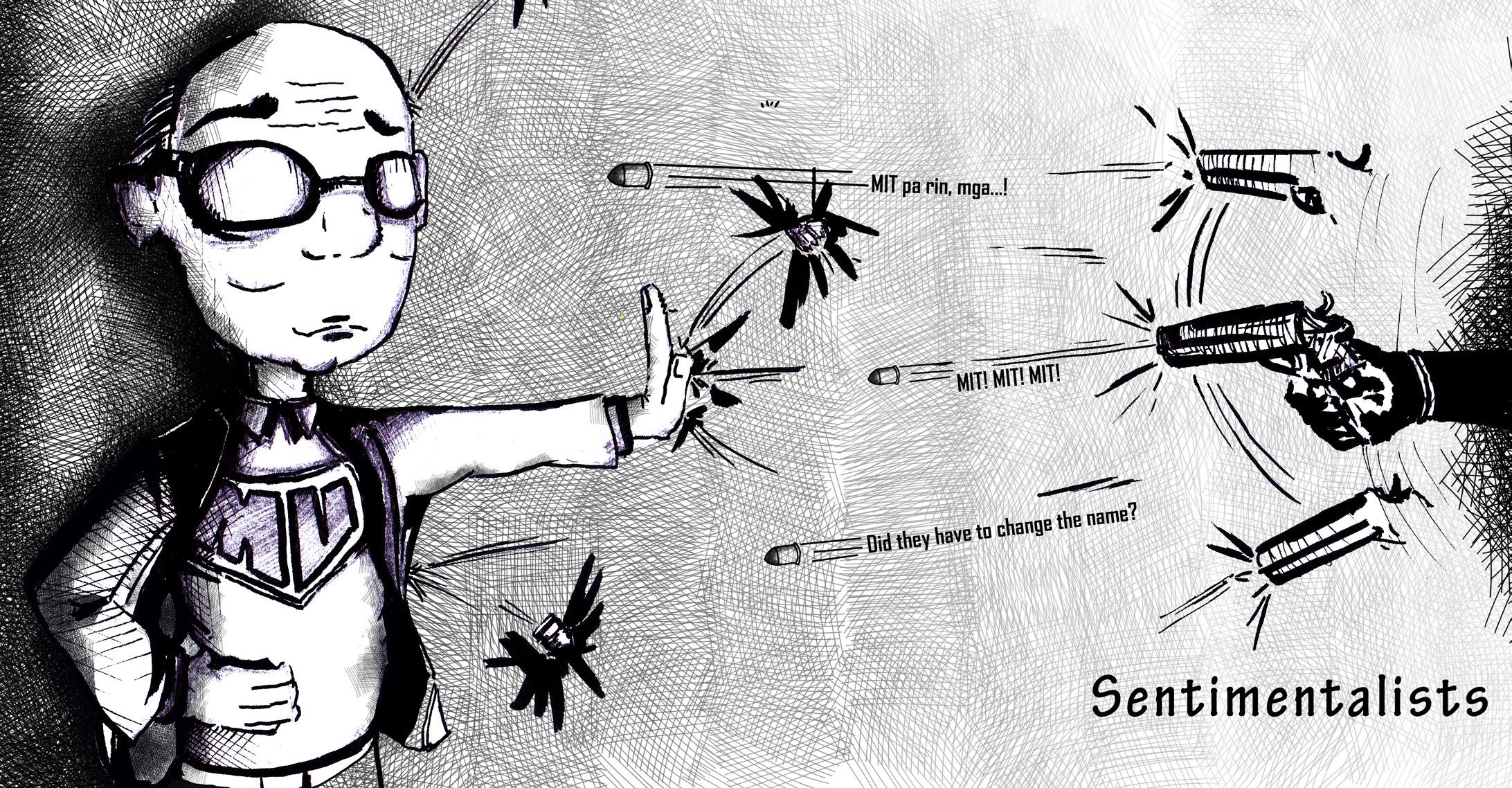
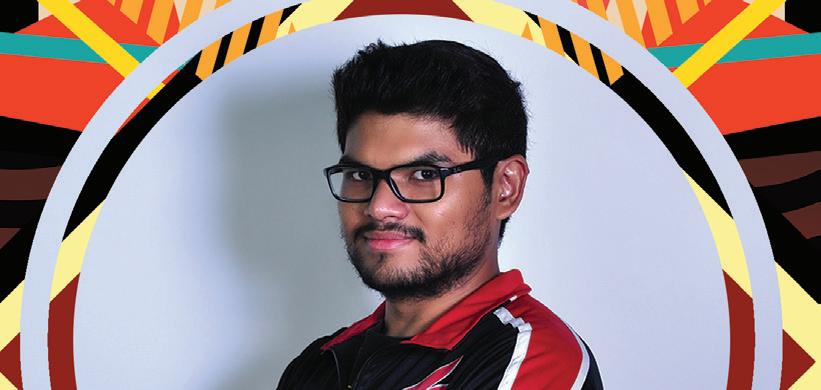
Ibelieve that our elevated status in the academic hierarchy calls for more investments in fields that are not so directly related to education, per se.
As a university, Mapúa must take upon itself from now on the responsibility of investing in various means of mental and moral support for its students.
Inspiration is a genuine force that gives substance to the things that we wish to do as students. It is not a required element for success but it is immensely valuable. I also think that inspiration is widely disregarded among Mapúans, and possibly even misunderstood. For example, there is a widely praised quote by Nolan Bushnell which says, “The ultimate inspiration is the deadline.” I do not think that is how inspiration works. You do not get inspired by a calendrical date. Yet, many Mapúans would get behind this quote because we are such suckers for autocratic one-liners, thanks to our professors.
I think the proper quote should be, “The ultimate motivation is the deadline.” This is because it is motivation that compels you to act almost immediately, while inspiration has more of a passive, growing effect. However, inspirations always grow into aspirations, and aspirations to passionate achievements. Alas, the Mapúan journey
Mind, an Investment?
Übermensch
John M. S. Pereira
can be tiring and monotonous, and along the way, such driving qualities can be lost to necessity – the necessity to finish school, the necessity to not disappoint your parents, the necessity to keep going because you have already gotten so far. This necessity is a toxic husk that many of us start to wear in our sophomore year.
At this point, Mapúa has actually reached a virtual cap with its university status. The only things that can be worked on now are the maintenance of standards and international recognition (popularitywise). The latter will come in due time, so long as more international students come in, and more future Mapúan OFWs are satisfied with their Mapúan journey. Because if they were not, they would tell their kids.
In order to achieve this satisfaction and get rid of the toxic husk, the school has to provide ways to enrich the Mapúan experience. And, no, I am not saying that we should have more pageants. What I am saying is that we should have more creative and engaging events to get students to rediscover their passions and to get them in the mood to think, and because they want to; not because they are forced to.
A TEDx event would be just perfect for
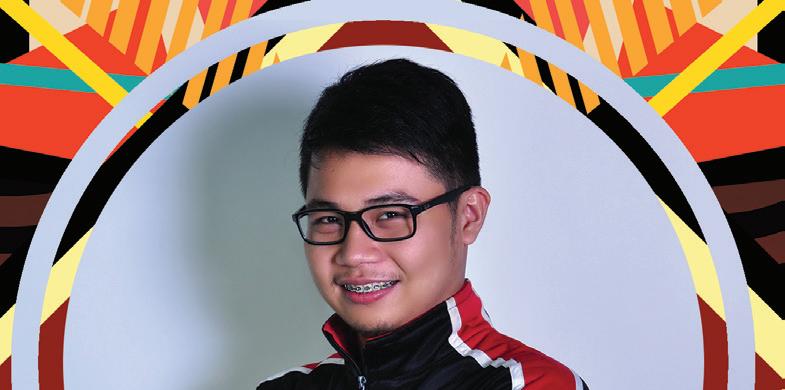
Wandering around the streets of Manila at night encourages a sense of looming peril. Faster and faster, the heart starts pounding, the beat racing towards a total resonance with every quick thump that each footstep makes. It gives a vibe of being followed by creatures of the dark. The thought of masked men riding steel horses stampedes over every hope of getting home safe and sound. Add to this the reeking aroma of human piss mixed with rotting garbage.
It feels like a case of a bad 4D experience.
While most Filipinos rejoice in the election of leadership in the current administration, the streets of the supposed capital of the country remain the same – treacherous and full of junk.
But to expect something from the leader of this government would be as ill-advised as asking a kid to provide a solution to greenhouse effects.
Because really, what can one expect from a man who prides himself in throwing people under the bus, in going above the law, and in putting burial shrouds on
“...we
should have more creative and engaging events to get students to rediscover their passions...”
this. If not, Mapúa could hold a similar event of its own. The school has a lot of talented and passionate professors who would make wonderful speakers in a seminar aimed at inspiring students and reigniting passions. There were countless times in class when I would just sit and listen to the musings of a professor as he or she talked about interesting and relevant work scenarios or applications of the topic being taught.
Another important thing is student retention, especially of international students. With the Bureau of Immigration’s (BI) strict immigration policy on foreign students, you have dropouts going back home telling other people that the Philippines is not a good place to study. What is the point of developing your international reach when the BI just thwarts your efforts with their policies? Work out a policy with the Bureau of Immigration (BI) that loosens the noose on foreign students so that they can go home as happy graduates.
Now that Mapúa is practically done working to make sure the students receive the best quality of education, it finally has the capacity to work on the students themselves. Here’s to working on our minds, Mapúa University, and not just our brains.
Same Old News
Let Your Game Speak
Calvin A. Trilles
thieves? What can one assume from an admitted serial killer who says one thing but means another? Just as he showed initial unwavering support for Gina Lopez’ fight against mining, he was quick to do a turnaround when the majority was in favor of her post being vacated.
Supporters of our country’s leadership have become so tolerant of what he has done and what he is doing simply because of the bogus logic that he is better than the past administration.
Maybe he is, maybe not. However, these are answers to an entirely wrong question. What should be remembered is that the sins of the previous administration should not be used as a kicker to justify the means of the new. If only people could spend more time in picking apart our leadership’s moves rather than labelling as “yellowtards” those who do not support him, the Philippines could have been a dwelling place for constructive debates and critical thinking. But then, most Filipinos are not really fans of intelligent discourse. People would rather express their undying support for our country’s
“...the sins of the previous administration should not be used as a kicker to justify the means of the new.”
leadership as if he is omniscient and omnipotent.
To add to the mix of things, our leader has somehow gotten the idea that it is about time to “give women a place in the nation’s ensemble”. A large part of the population would readily back up his promotion of sexy stars to government posts, just because, period. Whatever the case may be, the bigger picture lies in the response of the masses to these impulsive decisions.
Just as Manila cannot hide its putrid gutters and rotting trash, the current administration’s leadership cannot hide his intentions of putting more garbage in the streets. And with little or no resistance at all, he is already starting to put garbage even in vital elements of the administration just to rub it in. If people will not start asking questions, or at least beg to differ, then the Philippines might as well be called Payatas all over. It really feels like a case of a bad 4D experience.
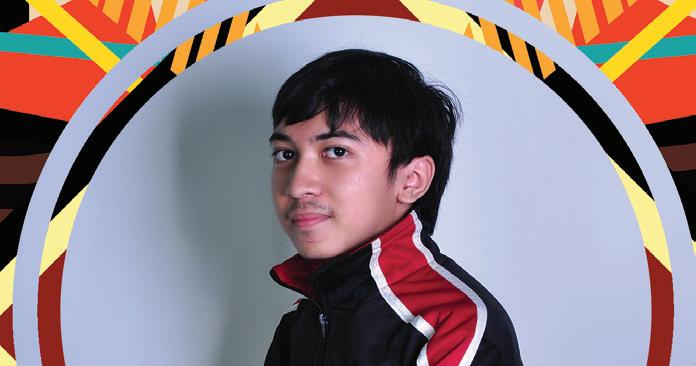
During the election season, one of President Rodrigo Duterte’s campaign promises was that he would not compromise Philippine interests in the West Philippine Sea. In fact, a statement from Duterte’s camp released April last year even voiced out the then-presidentiable’s support for the Philippines’ case against China at the Permanent Court of Arbitration.
However, with the many important issues the government has had to face over the past year, the President has chosen to be flippant regarding our sovereignty, being subservient one day, and confrontational the next.
Last April, Duterte hastily cancelled a planned Independence Day visit to Pag-asa Island after being “advised” by the Chinese Embassy in Manila not to go forward with the event. Duterte even came to the defense of Chinese ships spotted in Benham Rise, saying that they were only exercising the right to innocent passage, despite Defense Secretary Delfin Lorenzana’s report that it is more likely the vessels were conducting surveys in the area.
The President even further stated that “there is nothing we could do” regarding rampant Chinese construction in the disputed territory. While the statement is technically true, such a defeatist comment is something one doesn’t want to hear from the leader of a sovereign country.
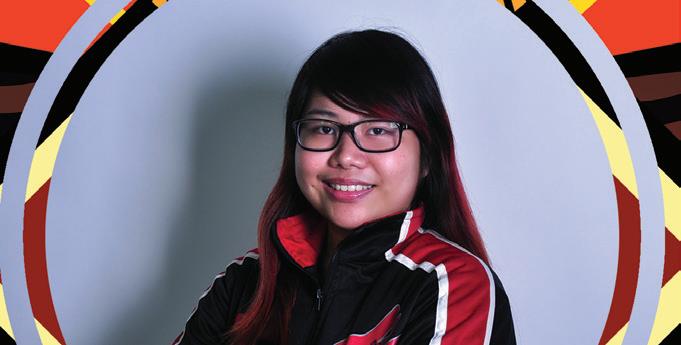
As we progress further with our ever-evolving technologies, we would soon realize their inclusive realities and flaws. But it is never too late to craft a cybersecurity plan, right? 15 years since its initial startup, officials from the Department of Information and Communications Technology (DICT) and its branched agency, the Cybercrime Investigation and Coordination Center (CICC), formally and officially revealed the National Cybersecurity Strategy Framework last May 2 at the Richmonde Hotel in Quezon City.
What does that mean exactly?
The TV series Mr. Robot and the hacktivist group Anonymous would spring to mind whenever cybersecurity is mentioned. Our concept and definition of cybersecurity is loosely based on fiction and internet hype when it is in fact a real threat in both the public
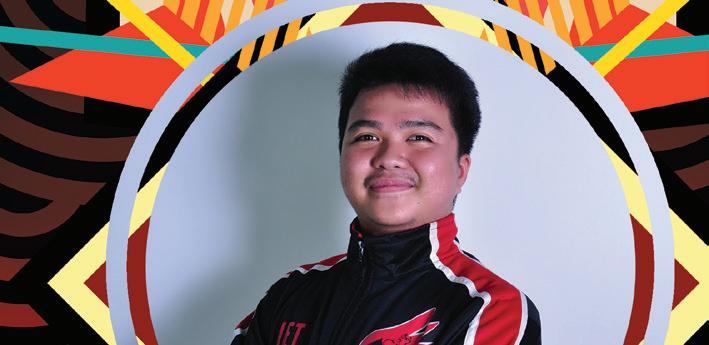
These days, social media has become a new avenue for reporting criminal acts. With just one post, click, and share, the story of harassment, abuse, and other related tales are spread out to the world. In the case where physical confrontation with the offender seems impossible, the power of the virtual gavel is used to deliver judgement.
Yes, with just one click, the rest of the world can know of wrongdoings that have transpired, at least from the victim’s perspective. The details of the level of abuse and the sorry
Two-Faced Nationalism
Skyclad Observer River Arliss M. Lontok
Maiming of the Shrewd
“...neither bravado nor cursing will do the country any good once the diplomatic tension boils over.”
Even more frustrating is that whenever the President decides to defend Philippine interests, he does so without even the slightest bit of diplomatic tact. Just recently, in a meeting with President Xi Jinping, Duterte outright told Xi that he plans to drill oil in the West Philippine Sea, practically daring his Chinese counterpart to a confrontation. He even brought up the UN arbitral ruling in favor of the Philippines during the meeting, never mind the fact that just last month, Duterte considered the same ruling as a “non-issue” in order to avoid offending Beijing.
This “urong-sulong” strategy of the President regarding the dispute in the West Philippine Sea simply makes it clear that the government does not have a clear plan on how to handle this diplomatic issue. After all, it is hard to believe that the Philippines and China will be able to establish a mutually beneficial relationship when the latter is able to push the former around with hardly a word of complaint.
To make matters worse, in the midst of this “frenemy” relationship with China, the Philippine government has decided to alienate itself from key allies such as the US and EU, by accusing them of attempting to interfere in the country’s internal affairs.
By straining our relationships with friendly nations and not having a
clear plan on how to handle the task of protecting Philippine sovereignty, Pres. Duterte has not only compromised our interests, but he has also damaged our reputation on the international stage. No nation can stand without its allies, and neither bravado nor cursing will do the country any good once the diplomatic tension boils over.
Instead of being overtly confrontational or kowtowing to Chinese demands, the government should have chosen the path of caution and treaded carefully around Beijing while using diplomatic means to fight for our rights and territory. However, Duterte and his men have simply decided to rush headlong into the fray and simply improvise their strategy as they go along, without paying heed to the possible consequences of their words and actions.
The bottom line is, this country has no need for either a sycophantic or warmongering leader. What Filipinos truly need is someone with tact, foresight, and a definite plan on how to lead and protect the Philippines. As such, Duterte should stop constantly changing his tune and get to work on truly fulfilling his mandate of serving the nation and its interests.
Of Hackers and Men
Synaptic Gaps
Maria Anne Therese C. Fernandez
and private sectors. People just do not seem to take it seriously.
Given the state of our social media presence, we are still oblivious to our accountability for our actions online. But the cybersecurity plan is not exactly laid out for our mundane musings and shenanigans; rather, it is for the protection of our government databases and networks. However, why stop there? This is not about schizophrenic paranoia or about a Big Brother scenario – cybersecurity is not just about keeping the hackers from stealing valuable information. It is about control over the internet: what we post, what we search, and our conversations – everything that the algorithm can read as a potential threat to national security.
But what am I rambling about?
At least we have a cybersecurity plan. Fair point, but we fail to include the human element in
“Social engineering is a serious tactic in obtaining information...”
security; it is after all the weakest link. Social engineering is a serious tactic in obtaining information (personal info, bank details, etc.) from a person, given hypnotism and the ‘budol-budol gang’ modus operandi, we can become victims to psychological manipulation if we are not vigilant.
It all simply starts with us, our understanding of cyberspace and cybersecurity, and the amount of information we release to the public, to our followers, or to our friends, whether it be booking a hotel, making a reservation at a restaurant, posting your receipt/passport/ID, and the like. Take the time to educate yourself, and always remember that revealing too much information about yourself, even on your personal social media platforms, can still be an easy entry point for opportunists to take advantage of.
Striking the Virtual Gavel
Antithesis
Norman
Delos Reyes
feelings are likewise shared with the public. The narrative is not a simple retelling of facts but an emphatic weave of outbursts for having their human rights trespassed. Through such posts, the victim gains the ability to fight and catch the culprit in his or her own way.
Once the person is caught in photos or videos, there is no escape from the clutches of the ‘modern judiciary court’. The face of the suspect has been cemented on the internet as one of society’s scum. That person is now doomed to face utter shame and humiliation for a long span of time. No matter what counteraction is to be done, the damage from this sort of online
“...the law of social media cannot be called absolute.”
judgement cannot be completely taken back.
Alas, such power is held by the gavel of social media. From one upload of sample photos and heart touching posts, one suspect can be delivered to ashes right away. No chance for the accused to explain his or her side and no cross examination of witnesses either. Just the statement of the victim is enough to hail an instant verdict on the issue.
This one-sided understanding is the loophole of the virtual gavel. The entire scenario which covers all the possible angles is not brought up in the discussion. Only one reference point serves as basis for the whole
The Gambit Chaos Jeremy C. Pichay
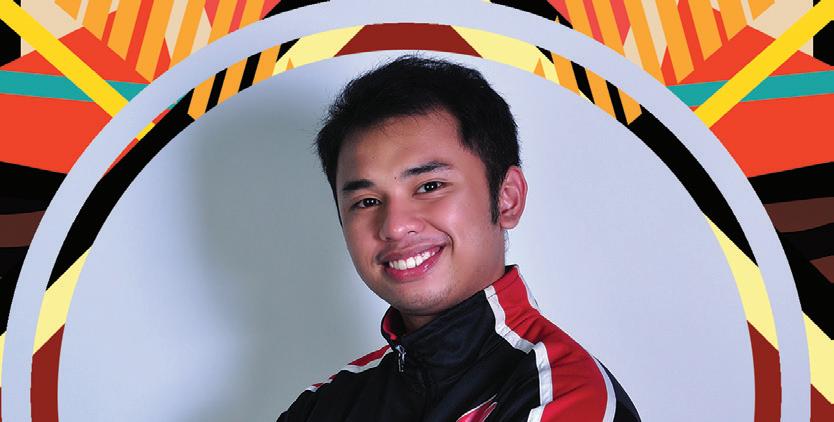
“Despite expressing their devoted vendetta against misinformation, these social justice workers focus more on their disdain for the afflicted...”
Once upon a time, fairy tales stoked the eager imaginations of children amidst the constant rapping of reality’s heavy knuckles on the door of consciousness. These stories nested their twisted morals into young, developing minds and became the emotion-driven principles by which society thrives. Like kids smoking their hopes lit by fantasies of yesteryears, it is not surprising then that adults have found their nicotine patches for their ideologies: fake news.
The comparison between a hopenurturing fairy tale and a misleading, fabricated news article could be thought of as somewhat absurd. If one would look closely, they can be observed to be fruits of the same illridden tree. No, one need not be a learned individual of ventriloquism to read well between these lines.
Fairy tales usually get passed around by word of mouth. Because of this, their origins are trailed with bread crumbs; some are eaten, displaced from their initial locations, or lost under the debris of time’s unravelling. At different points, details tend to be bent according to the message waiting to be exploited. Freedom seems to be a given to altering these bits of fiction to the discretion of the storyteller and his intent.
The same holds true for fake news.
In order to stack firewood atop the spark induced by the want to preserve individualist views, other people massproduce these adult fairy tales for public consumption. They capitalize on the tendency of the human mind to find comfort in the company that encourages rather than discourages.
Like leeches, these makeshift (or for a better term, fakeshift) journalists latch on their audience’s self-righteous schizophrenia and feed off those gullible enough to have their bodies sucked dry of essence.
To put it simply, fake news are adulterated fantasies a person would gladly read and thereby form the very foundation of his supposed belief system on.
There is nothing wrong with the upholding of one’s personal views and the hope of being heard. At a young age, children turn to their favorite
incident. What if there are vital gray areas in the situation which reveal a different scenario, yet the offended party mistakes everything with their black and white perception? What if the other side of the coin tells a different story after all?
To make matters worse, the ‘peenoise’, or the online mob, clobber the thread destructively. They curse and spread the hate as if they were first-hand witnesses of the incident. The mob acts behind their high keyboard pedestal, adding more degradation to the issue. Yes, they swarm the post as elitist-saints with a pitchfork in hand, getting ready for the barbaric word war.
With all of these pitfalls, the law of social media cannot be called absolute. It is vulnerable to lots of misuse under the hands of gullible ones. In the end, it is still better to seek the law of the nation in addressing such issues. There should be formal procedures and
stories for a gentle pat on the back, reassuring them that everything will find its rightful course. That said, it is not the populace’s fault for being fragile. The greater responsibility lies within the more capable majority, including opportunists who know well but choose instead to ride on public hysteria for the truth.
Of course, it can be said that hope is the drug one would lose his mind over for trying even once. The withdrawal process is a gruelling ordeal, making former believers reluctant to be on its hook ever again. However, there is something unhealthy both in spirit and mind about subscribing to such tales. With their stands on the line, people argue with their warped version of reality and ignore the other information that will put their ideals to shame.
It comes as no surprise then that a number of people find this abomination to be irksome and unpleasant. Despite expressing their devoted vendetta against misinformation, these social justice workers focus more on their disdain for the afflicted than on intentions of remedying the disease and finding a cure. These realists defiantly stomp on the irregularities and brag about their aptitude based on degrees of education.
Whatever side one might take, it cannot be avoided that the issue lies within the people. There will come a time when fairy tales will no longer be considered as attached paraphernalia to combat the harsh truth of the world. The underlying case here may be that people are just really kids fearful of growing up. That growing up entails a higher understanding of what is true and not, and the ability to do what is expected of them.
There is no escaping the responsibility, even if the clock has not yet struck midnight.
settlements which can be fair and impartial to both parties involved. Furthermore, simply venting online will not put the culprit behind bars, even if proven guilty. His reputation will be damaged, but he is still free. Trust the law. If no one does, what do you think will happen? Every one of us will become vigilantes in our own way. Either through the physical or written method, we will deliver judgment using our own hands.
Again, the power of the virtual gavel is not entirely wrong; the fault lies in its misuse and overdependence. It is the way by which the gavel is struck that must be shifted. Less shame and humiliation, and more awareness to the public must be raised. Let such online posts become instrumental for social consciousness, and not be used as a discriminating tool. Let the authorities shed light on these dark encounters and handle the final verdict officially.
“Pasikatin
natin to. Walang hiya siya.”
BY INNA MAE JOYCE A. LONTOK

M s. Justine Claire Alfonso performed a remarkable feat for the School of IT community in Makati when she graced through this year’s Mr. & Ms. Cardinals pageant with her confidence and beauty, winning her numerous titles during the coronation night aside from the crown itself. Like the mythical bird, Halcyon, she managed to tame the challenging waves around her before eventually owning the night.
Situated in the middle of the hustle and bustle of the business district is the quiet campus of Mapúa Makati, where the newly crowned Ms. Cardinals, Justine Alfonso, is in her third year of studying BS Computer Science.
Apart from being the reigning Miss Cardinals, what makes Justine different from other people’s perceptions of a Mapúan student is that she is able to balance her academics and social life. However, the most unique aspect to our Halcyon lies in her graceful talent – figure skating. Justine joins competitions from time to time, yet she is able to balance this into her life with ease.
Being hailed as Ms. Cardinals is a responsibility. For Justine, setting a good example and maintaining one’s academics is essential, as well as one’s values. Justine believes in the

potential significance of ripple effects which stem from the little things that one does. This is why one of her advocacies is the LGBT movement which she backs by fully supporting antidiscrimination laws, along with other proposed LGBT rights.
“The acceptance of the LGBT community would be a milestone for the Philippines. Thus, we should respect diversity and accept people for who they are because discrimination, not only in the LGBT community, will never be acceptable,” she shared.
The voyage is not always going to be over smooth waters; for it to be successful, the captain must always come prepared – and that is what Justine did. She admitted that she was terrified of having her intellect judged in the question and answer portion. She did not want to appear uninformed or spaced-out in front of the audience. Hence, she did her research on what finalists in the past pageants did, and with enough preparation, she came through successfully.
Bringing home a lot of awards can be something to brag about, but for Ms. Cardinals 2017 Justine Claire Alfonso, humility always prevails .

A pill for your thoughts:
JUSTINE CLAIRE ALFONSO
JOHN ROYCE CABRERA

For some people, taking anxiolytics and antidepressants is a common routine they share with other patients taking maintenance medication for diabetes, high blood pressure, and the like. Mental health is so often neglected that we have become desensitized to the idea that our minds can become ill and therefore need treatment as well.
A prevalent problem in society which stunts the treatment of depression is its misconceptions. People have it easy when saying depression is only a phase, or that it is only a simple eruption of sadness. In reality though, depression should be considered a clinical condition, and as such, should be immediately treated. Another thing to note is how hard it is at times to identify whether a person has it. Behind a mask of seeming healthiness, people hide the symptoms., which is why suicide often comes as a shock.
Suicide is often linked with depression. Psychological and social factors often give root to such tragedies. Sometimes, all it takes is a buildup of small mishaps to push them so far. Sadly, some societies deem it an action of weakness, or even a sin, but it is key to
understand the circumstances which pertain to the act. The weight of a suicide does not only fall on the person committing the act, but it also affects family, relatives, and the surrounding community they belong to. Such a sudden passing leaves painful scars. As one of the top causes of death, it is not something to be taken lightly. Hence, its prevention should be a priority, and awareness is the first step towards prevention.
Adding Fuel to the Fire
Mental illness can affect people in a variety of ways. In fact, many of us might know someone who has suffered a mental illness at some point in their lives. Yet, whatever relationship we have with individuals with mental illnesses, there are a lot of hurtful attitudes toward them that fuel the stigma and discrimination, making it hard to reach out and offer help to them.
Many people maintain unenthusiastic attitudes towards people with these illnesses. Children often tease them as being “crazy” or “weird”, and it is common for such rudeness to pass on into adulthood. Adults stereotype them as being violent, insane, or dangerous.
Instead of reaching out to them, people will usually give them the cold shoulder and tell them, “It’s all in your head,” or, “Change the way you think.” This kind of ‘advice’ invalidates their concerns. Some people believe in the impression that individuals with mental illnesses are hard to talk to. Hence, they try to avoid contact as much as possible.
These perceptions are created from media stories suggesting violent perpetrators as “mentally ill” without providing the milieu of a wider spectrum of mental illnesses. Another feeder factor is the uncaring, “hardened” sentiments of older generations due to their “tough” upbringing in a home that never gave any attention to such concerns. As a result, indifference in one generation begets arrogance in the next.
For Dr. Rommel Gonzales from the Department of Psychiatry and Behavioral Medicine of the Philippine General Hospital (PGH), the stigma exists “because they already have a preconceived notion about the person.” He also noted that we act towards someone with a mental health condition based on our personal understanding of that person.
Social distancing grows from these negative attitudes. An individual labeled as dangerous because of the sickness consequently results in fear and further social distance in the individual’s community. Rejection is followed by loneliness in these individuals, which sometimes leads to repercussions like self-harming.
Even if they are not physically suppressed, individuals with mental illnesses will recognize the negativity thrown at them and internalize the stigma into developing a “self-stigma”. The question, “Why even try?” is the result of this self-stigma, which can worsen the prospect of recovery. Eventually, they will experience symptoms like anxiety and depression, which they try to suppress out of shame or selfloathing, thereby causing more aggravation.
“We are part of those creating the social stigma,” Gonzales warned.
Dousing the Flames
The people who take part in cementing the stigma are actually the same ones who can alleviate it.

The Mr. and Ms. Cardinals annual pageant has been an old and revered tradition in celebration of Mapúa’s Foundation Week. More importantly though, it is a momentous occasion where Mapúans from different campuses and different schools come together as one to support their favorite candidates.
Last year, John Royce Cabrera was just your typical Construction Engineering Management student, and as such, he had his fair share of bittersweet experiences in his academics. However, things took a full turn last January when he was chosen as Mr. Cardinals 2017. From there, it paved a much brighter outlook for Royce.
As reigning Mr. Cardinals, he carries the enormous responsibility of embodying what it is to be a Mapúan. It is not easy to be someone whom your peers are encouraged to emulate. In his words, “Sobrang daming tao na nag-eexpect sa’yo kung ano yung pinakita mo sa stage.” [Lots of people have high expectations from what you showed on stage.] Indeed, given his sudden launch to the spotlight, the pressure of holding the title to personify the epitome of a Cardinal is a heavy burden.
This strapping gentleman is not all about what meets the eye. Even during the pageant, he admitted that mentally preparing himself was the hardest part of the competition. For him, answering a question in front of thousands of people who are waiting to judge you by the first words that you utter, was incredibly daunting. As a result of this, he had a moment of stage fright but he
BY KYRIEN JEWEL JANEENA L. TABUCAN
fortunately powered through it.
Beneath that physically appreciated exterior, you might wonder who the real Royce is. Despite the “suplado” [snobbish] and brusque aura he gives off, he is light years from that description. “Makulit” [mischievous] and “easy to mingle” were his exact words when asked about how he is around his friends.
Once you get to know Royce, it is impossible not to see him as someone with immense energy. He is extremely active in sports and finds it hard to remain stationary for more than an hour. He is either a busy bee at school or engaged in sports or any other physical activity.
At the end of each day, just like any other student, Royce hopes to march down the aisle of the PICC hall. He aspires to finish school not only for himself and his family, but also for his community in Pandacan.
Growing up in Pandacan, Royce saw how unsanitary the area was. He witnessed how terrible living situations were due to polluted rivers and streets. The worst part was that nobody really cared enough to make things better for them. It has been one of his advocacies to aid in the betterment of the Pandacan community and provide the utmost comfort to those who call that place their home.
From being a dashing debonair to a selfless advocate, John Royce Cabrera is the Mr. Cardinals winner with the most iridescent personality yet.
The silent battle of chemical imbalance
“Know the facts. ‘Ano ba talaga yung schizophrenia, depression, bipolar disorder?’ This would somehow institute some change in you. Once you know the facts, you become more ‘forgiving’ to these persons,” Gonzales imparted.
The psychiatrist presented an analogy in which a father at a train station appears to be inattentive to his own children as they play around and constantly bump into other people. When one of those people goes to the father, the latter explains that his wife had just died, possibly leading the former to become more “lenient” towards the father.
“Once you become more knowledgeable, you become careful with your words and actions, and maybe even start to educate others about mental disorders,” he said.
Towards better services
With the Senate voting 19-0 to pass on the third and final reading Senate Bill No 1354 or the Mental Health Act of 2017 last May 2, the country is a step closer to fully integrating mental health services into the public health system, and instituting a statewide policy with regard to mental health.
Following the Philippines’ legislative process, SB 1354 will now be passed to the House of Representatives for concurrence, and should the Lower House pass it without any conflict, the bill will then go to the President for approval.
Provisions stipulated in the bill include the rights of patients, mental health workers and professionals, and other stakeholders; integrating basic mental health services all the way down to the barangay level, as well as ensuring information dissemination about the subject into both the educational system and the workplace.
A Lingering Existence
Nowadays, terms like anti-social, depressed, bipolar and the like, grow popular through the essence of media. These words usually lie in a Twitter or Instagram bio, or as a hashtag to a selfie. While it is admirable for people to be aware of these words, its misuse is equally alarming. Instead of an actual illness or state of mind, people refer to them as feelings – a dangerous sign that society does not tend to take mental health seriously.
On another note, the term ‘triggered’ is invalidated and used loosely. Certain images, video clips, sounds, and even scents, can unravel traumatic stress and cause anxiety that is accompanied by mental breakdowns. The internet carelessly uses the term to refer to someone who goes into hysterics due to a certain reason. The truth to the term is far from funny.
It is important to know the weight and reality of these mental health disorders before putting it up to decorate a personal biography.
Reaching Out
Depression also manifests behaviorally in a person, with tell-tale signs like lack of eye contact, poor concentration, memory loss, agitation, oversleeping, and even pessimism. Although in most cases, the illness is subtle and hard to spot.
Oftentimes, depression is a silent battle with wounds that take time to heal. Despite being busy Mapúans, we should take the time to look for symptoms in ourselves and in our friends and family. We must do our part to combat these silent yet lethal illnesses. The best way to relieve the suffering of a mentally ill person is to make them feel needed and understood.
If you feel that you may be suffering from a mental illness or feel the need to talk to someone, you should not hesitate to get help. Yes, getting help is difficult because of the thought of sharing personal troubles with strangers, but it is extremely effective. At Mapúa University, trained and experienced counselors are present to provide advice and guidance to those in need.
For those with suicidal thoughts, there are prevention hotlines available. Hopeline, launched by the Department of Health, together with the World Health Organization and the Natasha Goulborn Foundation, is a 24/7 suicide prevention hotline which can be reached through (02) 804-4637 , 0917-5584673, and 2919 for Globe and TM subscribers.
by Pauline Kirby P. Cinco, Marc Jazer F. Esguerra, Faye Lorelie N. Reyes & Renzel Gene G. Reyes
PICTURES BY JOHN RYAN S. SABADO
Drop, Cover, and Hold On: Mapúa and ‘The Big One’
BY SHEINA MARIE I. BORRETA, MARC JAZER F. ESGUERRA, RHEA MAE B. JACINTOS & VINCENT ANDRE B. ANDRE RAMIREZ
People along the West Valley fault have been preparing for the socalled Big One; the earthquake that many hope to be another false prediction. Unfortunately, Mapúa is one of the many establishments threatened by the predicted 7.2 magnitude earthquake said to hit anytime soon. With this kind of tension in the air, it would be a relief to know what Mapúa is doing in preparation for the Big One, since nothing beats personal preparation and awareness. All this and more, is what is in store in this issue’s Earthquake Special.
Do the Drill, stay Chill
Mapúa conducts regular earthquake drills to familiarize students with safety protocols for an earthquake scenario. These protocols are driven by the Campus Development and Maintenance Office (CDMO) and enforced by the guards stationed all over campus. In case a student, faculty or staff member needs assistance in the middle of an earthquake, the campus security guards are trained to help execute the proper protocols, ensuring safety for everyone.
For the students of Mapúa, the general safety protocols for earthquakes are also part of the module for the course Civil Welfare Training Service (CWTS). These protocols should be taken seriously by everyone as they may be crucial to our survival when ‘The Big One’ hits.
Prep the Kit, it’s Legit
Due to the increased occurrence of minor earthquakes these past two months, the university informs and encourages everyone to prepare an ‘Earthquake Kit’ that can easily be brought at major malls nowadays. This kit includes the essentials like clothes, food, water, a whistle, flashlight, radio, and basic medical equipment.
Don’t be “shookt” by the shake BeforE THe Quake
In the event of a quake, you might have only seconds to secure yourself. The keys to maintaining calm during those crucial seconds are learning, preparation, and practice. For one, you can start by taking the drills seriously. One of the
most important things you can pick up is to “Drop, Cover, and Hold On.” Drop on your hands and knees, cover your neck with one arm and hand, or crawl under a sturdy table or desk, and hold on until the shaking stops.
Wherever you are, always ensure that you have access to the aforementioned ‘Earthquake Kit’, which basically has the same contents as most other disaster survival kits. Try to make a habit of bringing it to school, or at the least having it handy, and regularly double-check its contents to make sure nothing is broken or missing.
At home, you can check that massive items (e.g. furniture and appliances) are held in place, and do not place heavy objects on top of shelves because they might fall during an earthquake.
Lastly, create a plan with family members or other companions when it comes to communication during and after the tremors. Have some walkie-talkies if you can. Assign a safe meeting place for when disaster strikes, like a personal evacuation zone of sorts.
DurinG THE QUAKE
If you are indoors, stay indoors. Scan your environment for sturdy tables or desks and crawl under those. If there’s nothing of the sort, stand against a wall or doorway instead. Steer clear of windows and doors. If you happen to be outside, stay in an open area so that you can be safe from falling objects. Avoid power lines and other structures that might collapse during a quake.
Try to stay calm and remember the protocols and all your preparation. Drop, cover, and hold on, and do not go anywhere else until the earthquake subsides.
Given that the three main buildings (North, South, West) are connected (North-West, South-West), the movement of one building will affect the others. Since the connected buildings weaken the entire structure, it could also mean that the NW and SW buildings are more prone to damage than other areas. Hence, it is best to avoid these corner sections when an earthquake does happen.
AfteR THE QUAKE
Bust out the kit. Your prime directive is to ensure that you and your companions stay alive. Look for and tend to injuries on yourself and your companions right away.
Be vigilant and scan your environment for potential hazards. Shut off the valves of damaged water, gas, and electric lines. Check for any gas leaks. Open all doors and windows and leave the premises if you smell gas, and notify authorities when you are at a safe distance. Wear protective clothing to shield yourself from broken glass and debris. When you are out in the open, do not go near beaches or damaged areas, unless you want to be swallowed by the sea or be crushed. If you happen to be at school, strictly follow all emergency protocols after the quake.
If ever you get trapped, the best thing you can do is to remain calm. Do not thrash around because you might inhale dust, which would be bad news for your respiratory system. Use your cellphone to call for help. If that does not work, tap loudly on a surface, use your whistle, or find other ways to signal rescuers.
When you are finally brought to a safe place, turn on the radio for the news. There will be tidbits of information like emergency numbers and instructions that can help ensure your safety. Lastly, expect aftershocks and reset preparations for a possible recurrence.
Manila’s Earthquake Tango
The Metro Manila Earthquake Impact Reduction Study (MMEIRS) published in 2004 indicates that since 1589, at least 36 earthquakes have damaged the capital in one way or another. Furthermore, the same paper notes that four major earthquakes have occurred along the Marikina Valley Fault system during the past 1,400 years, with an average interval of less than 500 years. The last known movement along this fault system produced a magnitude 5.7 earthquake in 1658, leading to Phivolcs director Renato Solidum Jr. saying that the West Valley Fault can move “within our generation.”
The largest recorded earthquake to strike the capital occurred in 1645, destroying the third incarnation of the Manila Cathedral and hundreds of stone buildings, as the generation then had not
experienced a tremor for the past 40 years. An estimated 600 Spaniards were killed and 3,000 injured by the quake. During that period, only Spanish casualties were counted. The same fault running along Nueva Ecija would then move again in 1990, killing an estimated 1,621 people.
Throughout history, earthquakes are notorious for the destruction they bring to affected areas. Considering earthquake prediction is still beyond current scientific abilities, the best one can do is to prepare for the effects.
As the soil in areas near bodies of water tend to be water-saturated, they are at risk of soil liquefaction, where the sediment loses strength and starts behaving like a liquid due to shaking. Phivolcs has identified that areas in the Metro which are located along the coast of Manila Bay are particularly prone to this phenomenon, as well as those situated beside Laguna de Bay and the Pasig River.
Assuming the worst-case scenario in which the West Valley Fault triggers a magnitude 7.2 earthquake, the MMEIRS lists a maximum of 34,000 dead and 114,000 injured, along with 170,000 collapsed residential homes, and damaged houses twice that number. A further 18,000 may die due to subsequent fires caused by the Big One.
According to the study, the regional area vulnerabilities fall under four types: flammability and evacuation difficulty, building collapse and evacuation difficulty, flammability, and evacuation difficulty.
The southeast portion of Manila, the central Manila Bay area, the Navotas port area, and the Manila North Port area all fall under the first category. The northeast portion of Quezon City, the western portion of Marikina City, the eastern portion of Pasig City, parts of Muntinlupa near Laguna de Bay, and the border area between Mandaluyong and Makati would experience trouble in evacuation and possible building collapses. Flammability would become a problem for the west intersection between Valenzuela, southern Caloocan, and Quezon City, while Taguig, Las Piñas, and northern fringes of the metro would have difficulties evacuating.
Citing these difficulties, the study notes that the region may be separated into four areas, namely the west (due to fires and building collapse), north and south (due
to the Pasig River, building collapse, and geography), and east (due to isolation caused by broken roads).
The Resistance
Owing to weak soil conditions in some areas of the capital region along with its seismic vulnerability, buildings must conform to the standards set by the National Structure Code of the Philippines, whose latest iteration dates back to 2015.
“If you talk about earthquakes, the most ideal structure is a light structure,” says Engr. Melchor Pilones from the School of Civil, Environmental, and Geological Engineering. However, while light structures such as those made from timber can exhibit seismic resistance, they are particularly vulnerable to fires, which exacerbates the problem to areas listed as vulnerable to blazes in the event of the Big One.
“Steel structures are comparatively better in an earthquake, compared to concrete,” Pilones further noted, as he recommended building the former for earthquake resistance.
However, the materials used in construction are not the only factor that makes a building resistant to tremors. “Now, there are many kinds of designs that will minimize earthquake (damage) like providing base isolators, or tune dampers like that in Taipei 101,” he remarked.
Due to the age of Mapúa’s buildings and its location near Manila Bay and the Pasig River, soil conditions may have changed from when the Intramuros campus was built 61 years ago. Thus, Pilones lists down a few recommendations to maintain the structural integrity of the campus buildings. These include a “reinvestigation of soil conditions” through sensors, “additional braces on specific areas,” “regular inspection” on the buildings to detect structural defects, and preparedness.
In this regard, CDMO maintains Mapúa’s buildings, ensuring that wear & tear sections of the buildings are replaced or maintained. The CDMO also places hardening materials to help the overall strength of the building and improve its stability.
Engr. Lorenz Joe C. Dela: Work Hard, Hustle Harder
“Fast pace, pressure, sleep deprivation – these are what Mapúa is known for. But, I tell you, this is what prepares us for life after school more than anything.”
After 5 years of countless challenges and hard choices during his stay in Mapúa, Engr. Lorenz Joe C. Dela is living proof of a Cardinal’s resilience. Even though his journey started with numerous trials, he turned it into a path full of success and inspiration.
Engr. Dela entered Mapúa in 2009 and graduated in 2014 with a degree of Bachelor of Science in Electronics Engineering. During his initial terms, he was able to obtain a full scholarship and maintain it for a while. However, the first singko was drawn in his sophomore year, and this made him lose his scholarship.
Nevertheless, Dela accepted the consequences of his actions and began to look for a way to pay his tuition fees. He thought of creating shirt designs, which led to the birth of ‘Ang Tunay Na Mapúan’ shirts. These were then followed by ballers, pouches, lanyards, and hoodies. Little did he know that in the midst of all this, he was already building an empire of his own and inspiring others, thereby leading to the formation of his moniker: ‘an engineer, entrepreneur, and educator.’
“I accidentally built an empire, an empire that paid my tuition fees for the next 3 years of college, while also accidentally finding love and a developing passion for entrepreneurship,” he said.
Despite failing a subject and losing his scholarship, he stood back up and rose to new heights. Failure brings out the best in people and it surely did for Engr. Dela. “Yes, I may have failed, but I have failed well,” he imparted.
Today, Dela represents the country in the ASEAN Young Entrepreneurs Council as one of its 30 council members. In addition, he also is a co-founder of the Philippine Young Entrepreneurs Association, a community that establishes a platform for young entrepreneurs to learn about the ASEAN economic community.
Aside from being an engineer and entrepreneur, he is also an educator. He is a Mathematics and Information and Communications Technology instructor at Mapúa, and an Electronics Engineering instructor at the FEU Institute of Technology. He is currently pursuing a Master of Science in Electronics Engineering major in Control Systems degree at Mapúa, primarily because of his passion for education.
Engr. Dela has attended various conferences and leadership training
seminars to constantly improve himself. Just recently, his background in civic engagement led to his acceptance in a fully-funded leadership program in the U.S. – the Young South East Asian Leaders Initiative (YSEALI). Currently, he is active in 5 different organizations, including YOUTeacH Philippines, the first and only nationwide network of young educators in the Philippines.
Regarding his accomplishments, Dela primarily thanks the Institute. “Mapúa has prepared its alumni for real life. All those cramming and last-minute project submissions during my time as a Mapúan made me a man that can make things happen in adverse situations, under pressure and with limited time. But above all this, the best lesson Mapúa taught me is about making hard choices, because you’ll have to make hard choices after you graduate.”
As an engineer, educator, and entrepreneur, Engr. Dela passes on these words to those who aspire to be like him, “The path may be harder and narrower than the conventional path which the past generations have already tried and tested, but with the right people, right hustle, and the right mindset, the path less traveled should eventually lead you to success.”.
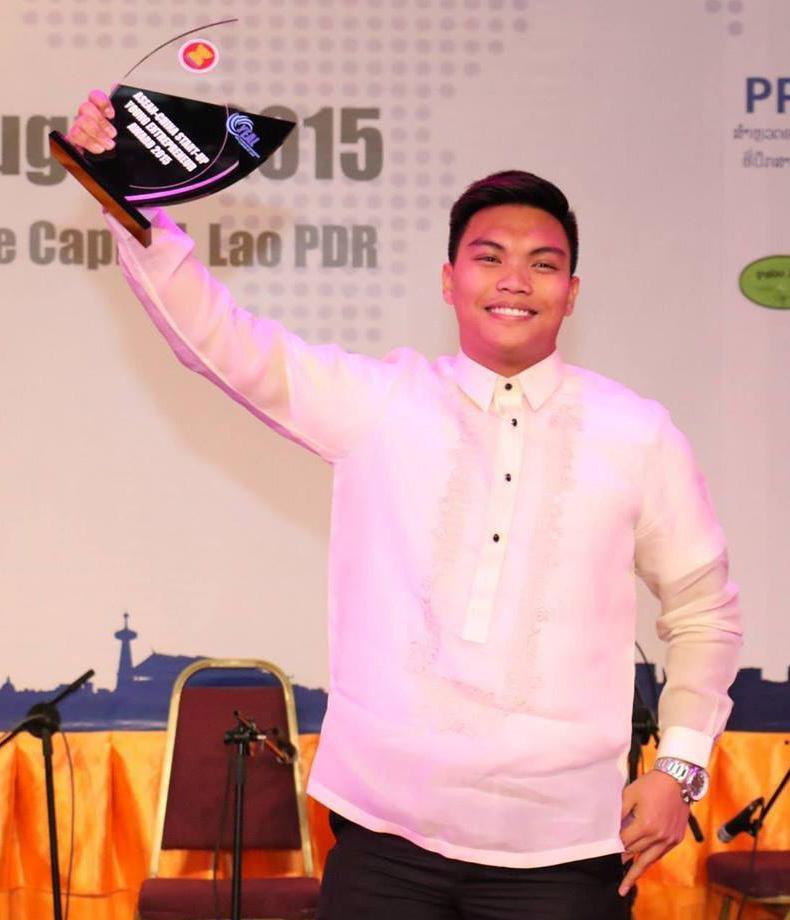
by Jana Rafaela B. Eusebio & Kristin
Clarisse H. Mateo
PAIN AND PLEASURE by INFINITE RESIGNATION
Pleasure is seeing the stars gathered in her eyes
Gazing at her galaxies, lost in her universe
Pain is the distance between me and her heaven
Cannot close the gap, each day a part of me dies
My heart shatters when her tender lips tap another’s
When I hear her mouth love but love not meant for me
Pulverized, but her smile glues me back together
She’s in good hands and that is pleasure and glee
Until those good hands gave her black eyes and busted lips
My dream is just a magnificent punching bag
“I found happiness in him,” as tears fall from black holes
“I love him so much, it hurts,” as blood from her lip creeps
Pleasure is seeing the stars gathered in her eyes
Gazing at her galaxies, lost in her universe
Towards the big crunch as her body sinks to the earth
All that’s left are rainclouds and thunder in the starless sky
The Angel's Descendant
Who is that radiant glow, That I constantly see. Who is that dark shadow, That sneakily follows me.
You look slightly suspi- cious, You look unusually strange. Stop staring at me As if you’re deranged.
by Maurine Claire F. Kim
I look at you Then you glare at me, It feels like the Deja vu Of a murderous spree.
My eyes follow you Until I grasp your hate. But as I get a clearer view, I just stand and wait.
I caught a glimpse of your eye, A void of vibrant red, Bearer of light, I cry Why do you want me dead?
You replied to me, With an angelic tone, I will help you see That you will never be alone.
In your heart there is no mercy, There is only hate. Come. I know you are worthy, My child, this is your fate.
DUsTOPIA: Earth’s Last Country
TheSacred Wreckage
by Robin
Excuse me, but can I rent you for a while?
In this godless city, under the dark sheets of these dead stars
Can you sin with me tonight?
Just for a little while, just a little bit of love
Exchanging kisses with liquor bottles
Wishing it was your lips exchanging galaxies with mine
With every explosion of sensation jolting my veins

Do you think you can spare me a little bit of your time?
You may have her in your heart
But after a few drinks, why do you call me after 2am
And then leave me high and dry
Babe, I’m seeing double
It’s getting harder to breathe
Stop filling my chest with ash
Oh, how the cigarette burns leave black holes
I call them love lesions, I hope you don’t mind
Can I call you later tonight?
I promise I’ll be discreet
Honey, I know I’m graceless
But can you choose me tonight?


year was 2022 when he said that he wasn't happy with how so little had changed, despite having done so much. He insisted he had more to give, more to do. So he went on with the charade, even when no one wanted him to.
In 2028, the world, continuing its exponential technological progress, had attained a sense of systematic nirvana. Countries had almost lost their patriotic essence, along with their barbed borders. Patriotism, a subtle characteristic that had controlled, segregated, and killed in the past, was only repossessed during occasional ritual dances and performances. Even religion no longer made sense to people who commemorate numerous tragedies that had been atrociously committed in the name of a ‘higher being’. And racial classification was something that confused these humans of your future, as they had descended from generations of interracial ancestors.
People felt individually displaced, and an era of depression dawned that was not related to fiscal matters. During the initial confusion of this rising worldwide identity crisis, the people of this future unanimously found peace in one another as they were unable to scrutinise another human for being different – because no one was.
Sometime in the summer of 2048, it was confirmed that humans weren’t the only sentient beings in the universe.
“Finally docile and enlightened. You have found fragility and sophistication in similarity – a first. We have been studying your progress quietly,” shared the non-humans on their first visit. They also confirmed with a revelation that Fermi’s Paradox was resolved with Clarke’s sentiment that extra-terrestrial beings were just avoiding us, “Your conflict resolution time was anomalously long. We studied this thoroughly, and we eluded the violence. We are not Gods to meddle in the matters of the unenlightened.”
Brooding
“More to be done, more time.”
Is This All I Came For?
by Sheina Marie I. Borreta
A million questions I've come to ask, Not even one-eighth answered.
A thousand thoughts have passed, But none ever heard.
A hundred met made me regret All the times I stayed quiet. A soul yet to forget, Left before sunset.
What more should I be keeping count of
To prove my life's on the rough?
Figures most use to bluff, But I've had enough.
In a life with a world so diverse, There must be more to this curse.
I wonder what more, Is this all I came for?

It is 2116 now, and in the squalor of an arcane palace called the Malacañang, the leader of the last existing ‘country’ broods. His island nation is divided, and his people are scared. Only the poor remain for him to rule over. The rich and well-off had escaped, sometime between his 12th and 16th consecutive tyrannical/ presidential run - even the national pride of this once patriotic people couldn’t compel citizens to stay.
While the world had embraced peaceful forms of development, this Dictator had employed brutish barbaric justice to keep his people in line. While he still struggles, the world had moved far beyond…
The last great atrocity of mankind was reluctantly violent. Yet, it was also beautifully unified as nations came together to put a stop to the massacres of terrorist organisations, which had taken its toll on the world’s emotions. Generations that had grown in multi-cultural empathy, have humbly risen to positions of power around the world. Employing force with absolute precision and only when absolutely necessary: one systematic, year-long, worldwide counter-terrorist operation was all it took to kill irrational evil.
In stark contrast to the way this leader operated where criminals were killed or imprisoned outright, even in cases where the evidence against them were lacking. There were worse cases where the evidence was almost non-existent. Hence, the killing of alleged innocents stirred nuances of retaliation among former followers. Followers who at first believed that the nation deserved an iron fist. Yet, they were instead overruled by irony.
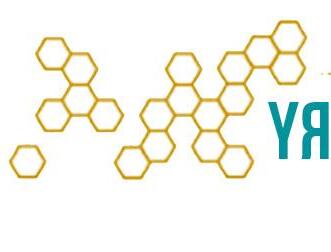

Econimmoral
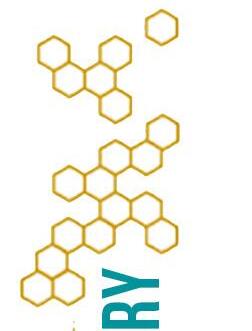
Human rights activists were the first to be abused and ousted by the masses. They were believed to be hindrances to national progress. For the first time in recorded history, an entire nation had traded morality for economy.
And so it went. One after the other, this country’s moral institutions fell. Following yet another confirmation of a technological prediction – the directly proportional relationship between technological progress and morality. And so, technological progress in the only remaining country halted, but the rest of the world went on.
Medical advancements increased the average human lifespan to 120 years. And even at these ripe old ages, people still had the energy to do as much as they wanted, thanks to medicine. The only signs of the end were a few days of weakness before passing, but most old people died in their sleep.
Only the bureaucrats of the last country of the world were able to gain access to such medical augmentations. Hence, political progress stagnated with their extended lives, and the turmoil continued. And so it goes on, and on, and on…


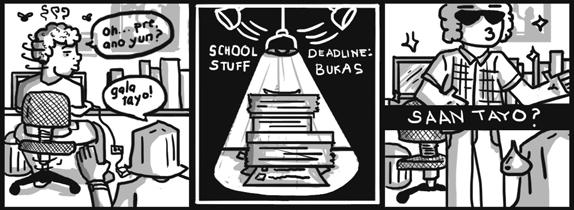
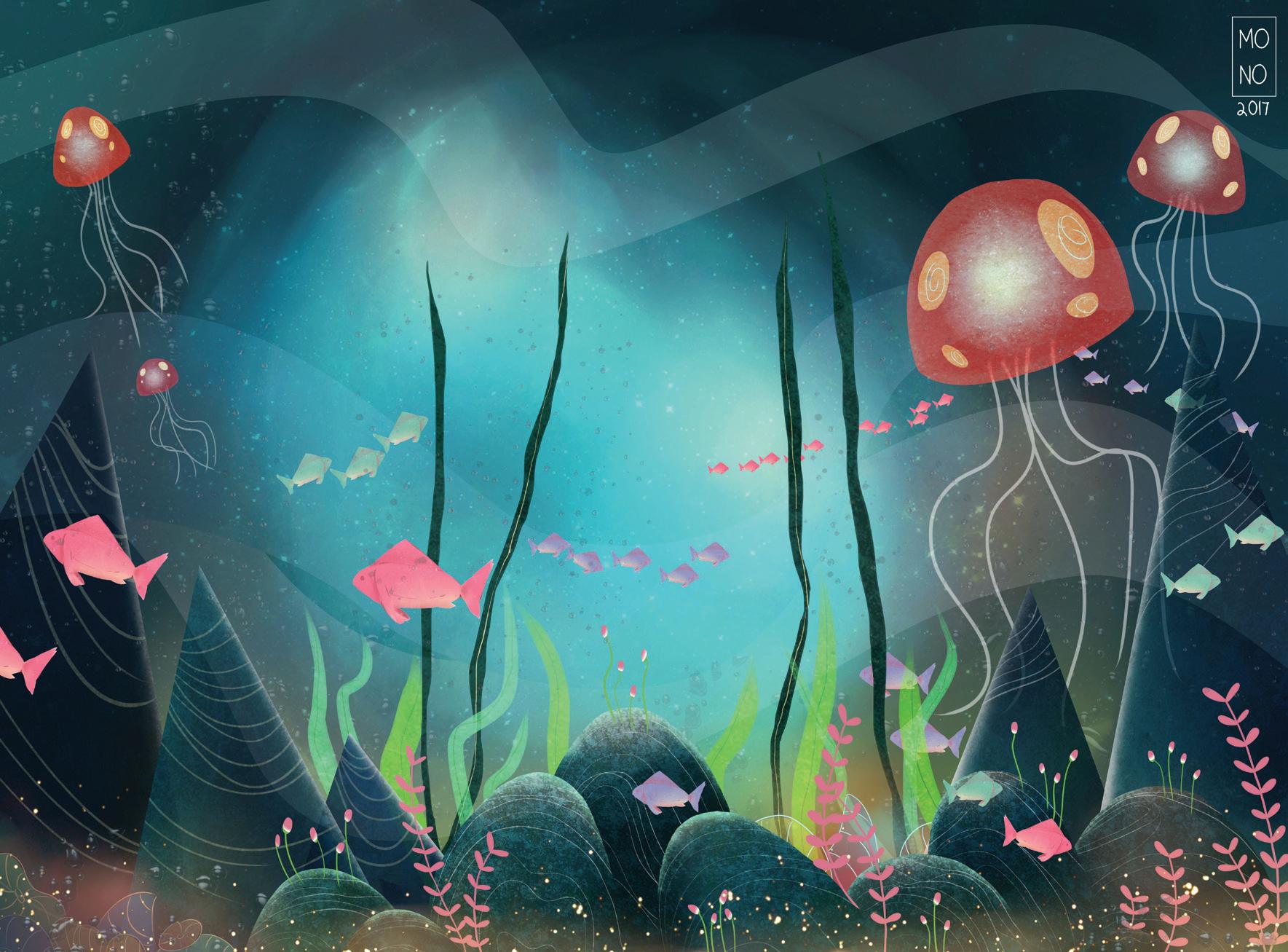
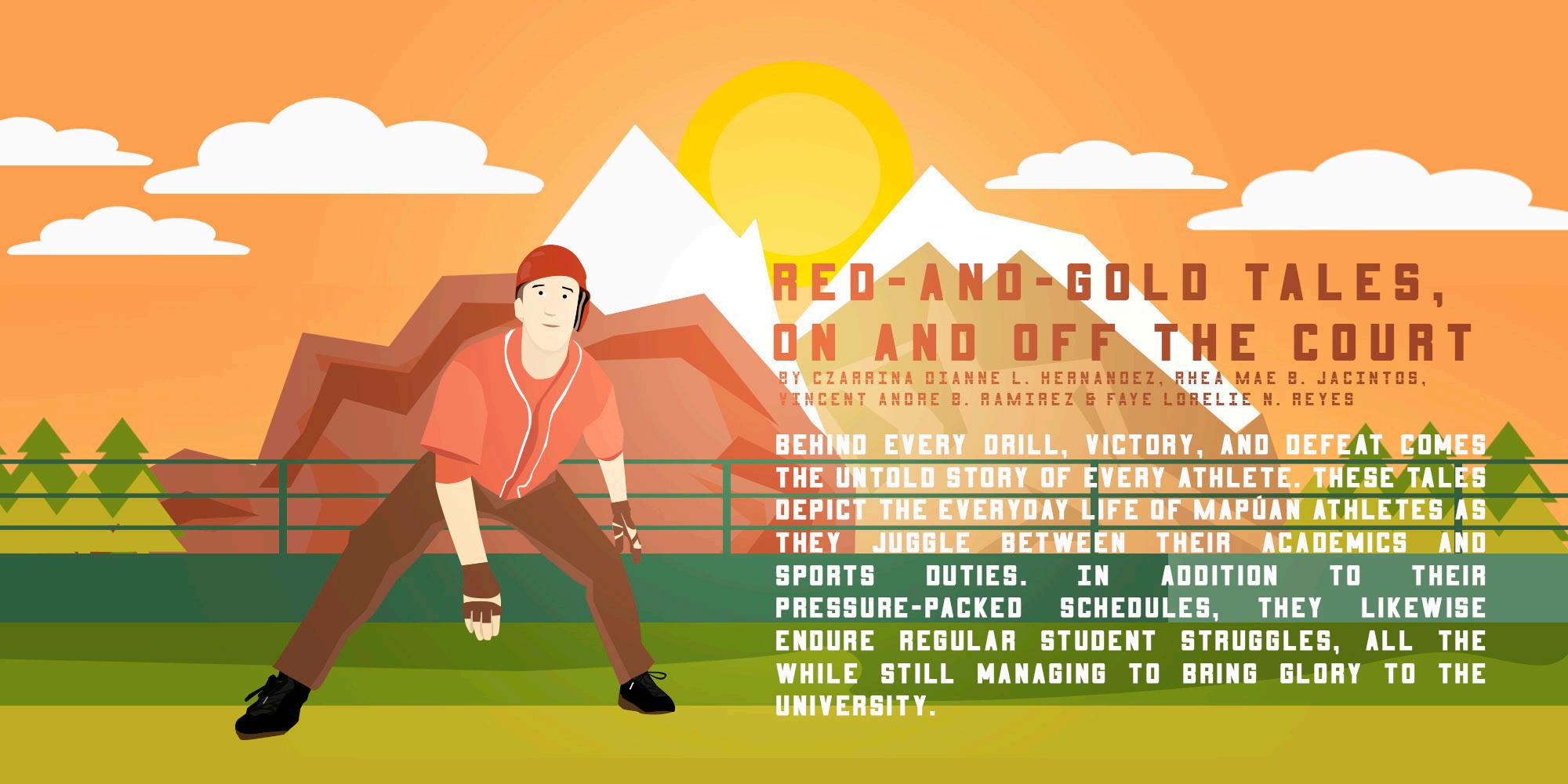
Judokas: Pounding the mat as one
In a tourney of wits and brute to take down opponents in the arena, the gentle judokas of Mapúa do manage to throw themselves off-mat from time to time to unwind and resuscitate their tired minds and bodies.
“Teamwork is an utmost essential in our team,” team captain Jaeger Peralta said. “The better we know our players and coaches the better we can motivate and strengthen each other since we know each other’s strengths and weaknesses.” Their common off-court scenes include engaging in team building activities, jogging together, analyzing techniques, and ending the training with a simple dinner.
A judoka can destabilize his opponent but never his time. Peralta emphasized that their studies are paramount even if tournaments are just around the corner. The judokas make sure they are always set, both in academics and in sports.
Men’s Volleyball:
A family with a single father
As they head out to rest and prepare for the next tourney, the Mapúa Men’s Volleyball team clings to the father figure set by their Head Coach Mario Mia Jr. “We usually do our team talk and we pray after winning or losing a game,” Mia shared.
The Volleyers’ long-time mentor describes the relationship between him and the team members as “like a father and his sons”. Acting as their second father, Coach Mia makes sure to remind his athletes to never give up and to persevere harder through tough times. “We just have to learn from our defeat and apply it in our future games for it will make us a much better team than before,” he said.
With Coach Mia in the center of the Volleyers family, the team is constantly able to find strength inside and outside of the court.
Cheerping Cardinals: Ascending heights with the Creator
Always a sight for sore eyes, the Cheerping Cardinals have steadily uplifted the school spirit. Although beleaguered in their recent competitions, the pep squad’s sparkle has not dulled as they continue to engage their challenges head-on.
According to team captain Noel Laforteza, proper time management is crucial to be able to overcome obstacles. They likewise believe that effective delegation is the key for tackling studies and training in a positive manner.
Any excuse, such as skipping meetings to do a missed urgent college task, will not go unnoticed and be tolerated. After all, they are expected to not only be astounding in bodily bends, but flexible with time as well. “Please prioritize your academics kasi student-athlete tayo. Kaya student ang inuna kasi priority ang academics talaga,” Laforteza firmly stated.
As with their education, the Cheerping Cardinals, including Coach Ian Diamante, never lose sight of God’s glory. They make it a point to always pray during every meeting, workout, and practice session. Win or lose, the pep squad never forgets to thank God for their well-being and accomplishments.
Booters:
A group that dines together, stays together
After a day spent running across grassy fields, the Mapúa Booters hit the dining hall to replenish their energy. According to central midfielder Walid Merzam, the team’s top bonding activity is eating to their heart’s content. “We usually eat in Mang Inasal because we are usually very tired and hungry after a match and we want to eat a lot,” he shared.
Another activity that the Booters likewise indulge in is playing Defense of the Ancients (DotA). “Doing activities together is beneficial to our team, because it makes us stronger as a unit,” Merzam emphasized.
Still, the Booters keep their individuality in terms of having their own pre-game rituals. “As a team we don’t really have a ritual; everyone does their own thing,” Merzam mentioned. Collectively though, the team strives with a common goal in mind, and that is to garner more victories for Mapúa.
Mapúa Cardinals:
From teammates to brothers
Similar to a wolfpack, the Mapúa Men’s Basketball Team revealed that they usually stick together, whether it be in hooping baskets or in finishing their academics.
Win or lose, brothers support each other – that is what incoming team captain Hesed Gabo said about the Cardinals. “I find it amazing, we started off as teammates, now we’re brothers. We got each other’s back through thick and thin.”
As part of their bonding, the Intramurosbased cagers spend a lot of time eating together. It has become their ritual to eat dinner with their teammates once or twice a week. Aside from meals, they bond through watching movies and competing in video games like the popular mobile game, Mobile Legends.
What people often do not get to see is that the Cardinals are also just normal students, despite their known status in school. They hope to actually break down the barrier between students and student-athletes. “We are trying to be students as much as possible. Gusto naming maging close sa students,” Gabo said, and added, “Kami, gusto naming makipag-socialize, kasi at the end of the day, iisa lang naman tayo ng school.”
Booters endure heartbreak in NCAA season 92
Even after all the grit and grind on the field, the Mapúa University (MU) Football team failed to break into the Final Four during the National Collegiate Athletics Association (NCAA) Season 92. In a shortlived campaign last November, the Booters finished 6th place in the tournament.
Despite unleashing all of their efforts towards the goal, central midfielder Walid Merzam maintains they still did not live up to their full potential. “I believe
our team last season was strong enough to finish in 3rd place at least,” Merzam remarked, feeling disappointed over the Booters’ underachievement. “I especially feel bad because I wish I had given my coach [Arman Esteban] more. He really worked hard to prepare us for last season,” he added.
Amid the lackluster conquest, the veteran Booter found a silver lining in their Season 92 journey.
Merzam noted that they have the raw talent for success but they need to be more fervid in every
outing. He added “We had the skill, ability, and talent. What we lacked was the most important aspect of the game: heart”.
As they lick their wounds from their previous tourney, Merzam said that the taste of last season’s failure is adequate motivation for them to be better and more eager in their upcoming tournaments.
“Every player should have this inner hunger to win and succeed,” the fourth year Manufacturing Engineering student athlete said. “They have to remember last
Kicking Cards lord over NCAA 92 poomsae
Imposing their dominance for the third consecutive year, the Mapúa Taekwondo team bagged the overall championship crown in the Poomsae division of the National Collegiate Athletics Association (NCAA) Season 92 last October 14.
The Kicking Cardinals garnered two gold medals, two silvers, and one bronze as they battled in the opponents’ domicile at the Colegio de San Juan de Letrán (CSJL) Gymnasium. They seized a tense victory over College of St. Benilde (CSB) in a tight race that saw them getting just one silver award more than their opponent. From last year’s 2nd runner-up finish, the team soared past the horizon in securing the elusive championship title.
The Mapúa jins easily conquered the Poomsae competition, a demonstration of refined Taekwondo forms and stances without having an actual opponent. They sinuously showcased various
offensive and defensive forms in front of esteemed judges and spectators.
Veteran Poomsae player George Chua III led the Kicking Cardinals as he starred in the three medalwinning bouts, ranking 1st in the Individual Male and Mixed Pair categories. In collaboration with Ranielle Paul Ledesma and Darryl Reyes, they gained the silver laurel in the Men’s Team division.
Meanwhile, Architecture student jin Joah Lou Lopez seized three medals, sharing the gold with Chua in the Mixed Pair category, and securing the bronze medal in the Individual Female category. Together with Alyssa Daileg and Franchezka Segovia, Lopez steered the Women’s team to another silver finish.
With the team’s vast improvement this year, Poomsae specialized coach Jay-R Odan expressed his satisfaction with his players. “I’m very grateful to them
since they have executed perfectly what we practiced before. Even though we failed to achieve a grandslam in the Men’s Team, we still managed to win overall,” he stated.
Despite their fiery success in the Poomsae category, the Kicking Cards experienced a cool down during the sparring matches that followed. The contact jins finished at 8th place in both the men’s and women’s divisions, with only Franchezka Segovia and Erson Macatangay reaching the semi-final round of their respective heavyweight and bantamweight class.
With their high-low performance in NCAA 92, the whole team is back on their training mats as both the Poomsae and sparring jins continue their intense practice to further hone their skills. Under the leadership of Head Coach Noel Almaida and Coach Odan, the Kicking Cards are preparing for a better and stronger comeback in the next season.
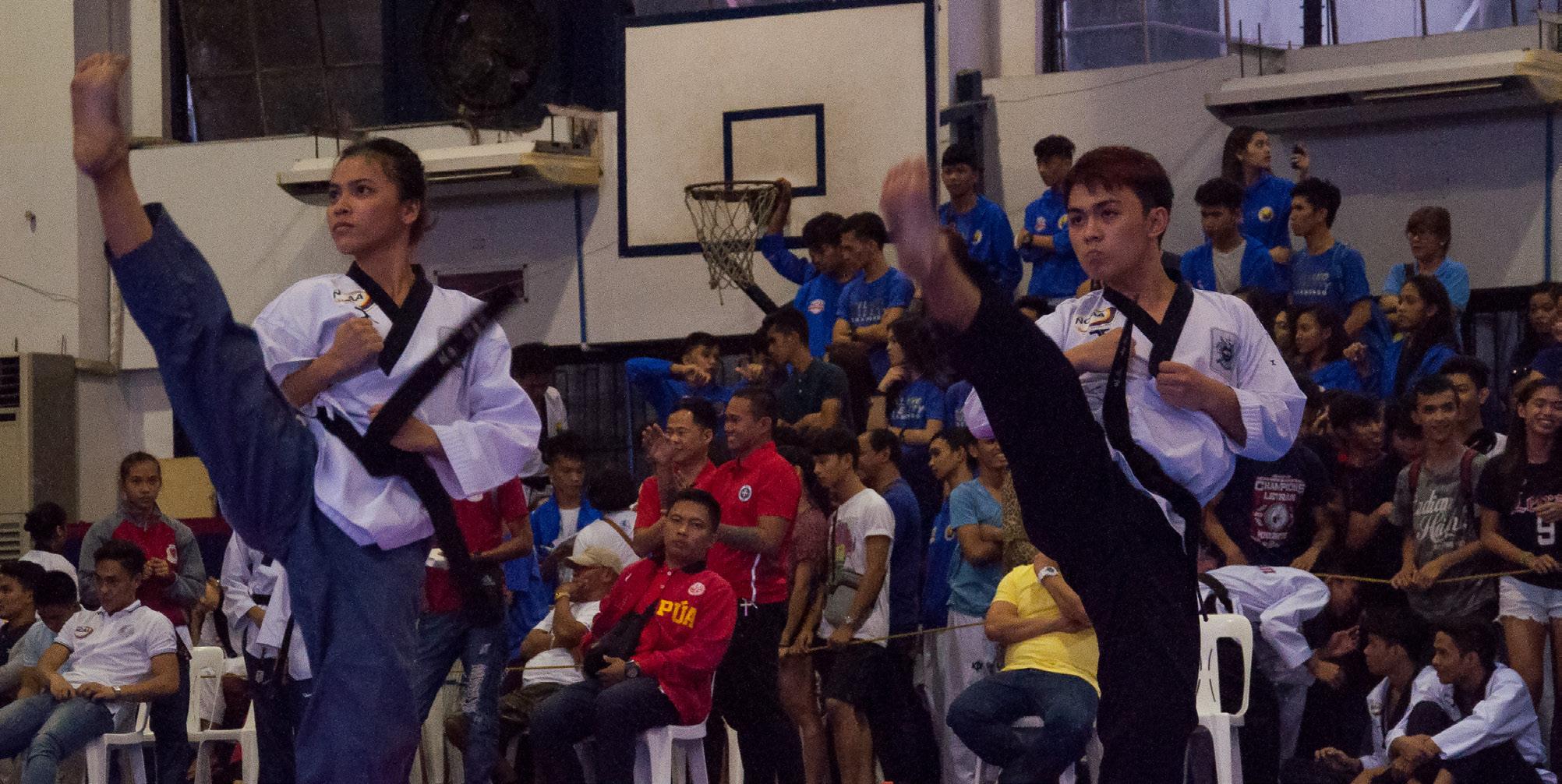
Tankers
seize
silver trophy in water polo debut
After decades of treading in troubled water, the Mapúa Swimming Team proved their aquatic versatility as they propelled to a silver medal finish in the Pilipinas Interschool Water Polo Tournament held last December 3.
Though still a greenhorn in the Water Polo circle, the Mapúa Tankers managed to emerge as 1st runner-up in their debut tournament. However, despite having swept the entire elimination round, the final matchup proved to be more challenging for the rookie team as they fumbled under the might of the veteran San Beda team. Nonetheless, even with the loss, the Tankers struck the aquatic battlefield with a commendable 2nd place finish.
As they tread a new direction in the pool, team captain Renz Evangelista noted the difference of water polo from their usual swimming. “Water polo kasi is like football din, mayroong gulangan, sakitan, sipaan na talagang nakakasakit.” [Waterpolo is like football. There’s trickery, hitting, and kicking which really hurts] He likewise shared how height is advantageous in the sport of water polo. “Lamang ang malaki sa maliit dito kaya kami medyo nahirapan sa ibang team, katulad ng San Beda, dahil malalaki sila at mabilis lumangoy. Pero kami, napigilan namin yung bilis ng langoy nila dahil sa turo ni coach.” [The bigger guys have the advantage in this sport. That’s why we had slight difficulty with the other teams like San Beda because they had big guys who
season’s shortcomings and build on that.”
Coach Biboy Esteban instructed the team to hit the weights room further during off-season. The longtime mentor stressed that the Booters must bulk up to survive the grind against their powerhouse rivals. According to Coach Esteban, this is one of the physical aspects they need to work on in the long run.
With all of the pieces correctly coming together, the Booters
have vowed to resurge next year with more hard-hitting strikes and tackles. Despite the disappointments in Season 92, the team has an undeterred mindset to punch the ticket towards the Final Four next year.
“I just believe that next season, these guys will succeed in what we have failed to do last season, and that is to finish in the top four,” Merzam declared as he passes on the torch to the next generation of Mapúa Booters.
Volleyers serve favorable NCAA 92 odds
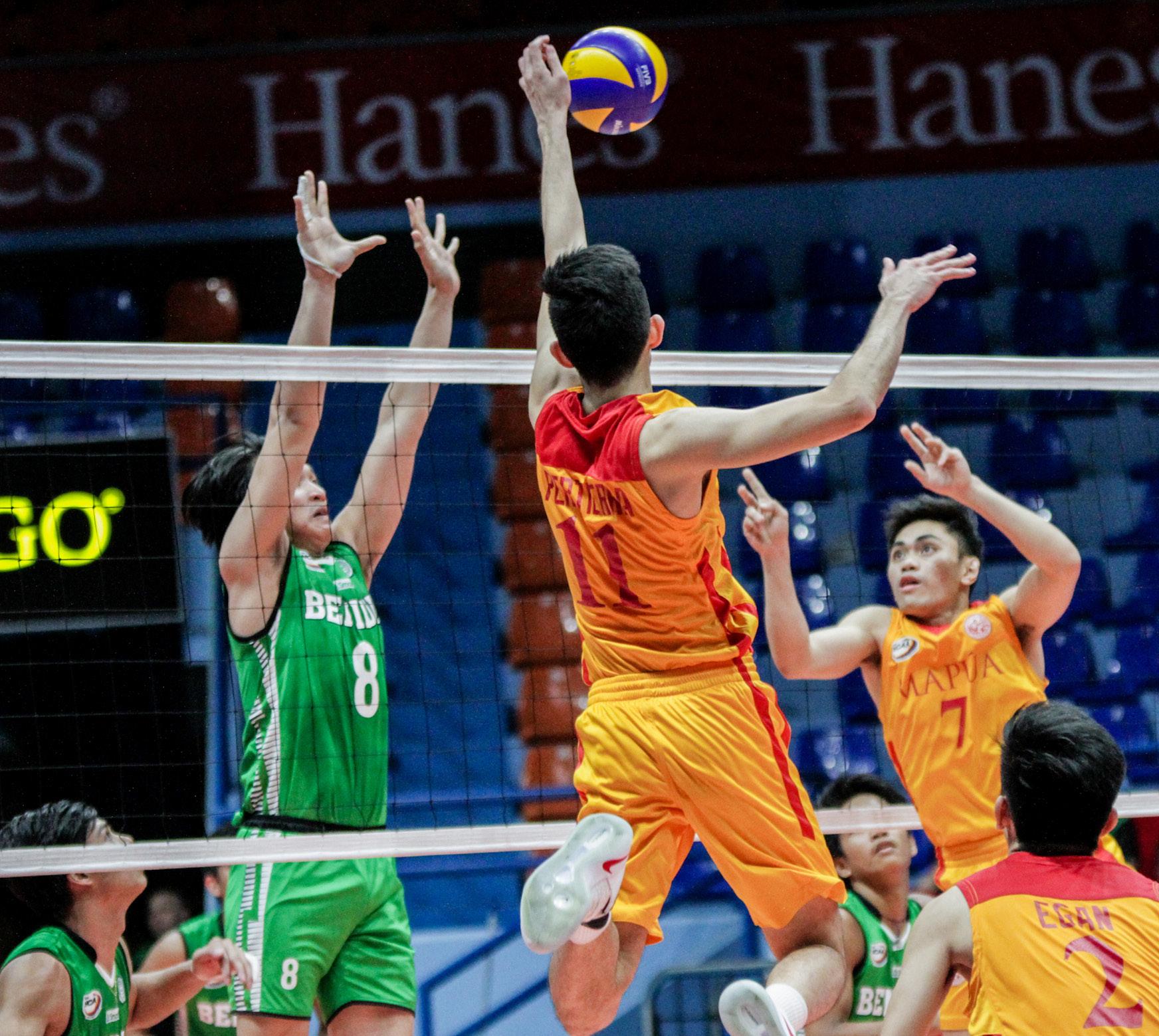
In wake of the silenced battle cry last season, the Mapúa University Volleyers showed their firm resolve and made a huge impact in the recently concluded National Collegiate Athletics Association (NCAA) Season 92.
The Volleyers carried a more vindictive mindset to atone for their lackluster performance in past competitions. Emerging from their cellar-dwelling stints last year, the men’s volleyball team finally climbed their way up on the standings.
Inspired by the Cardinals’ renewed tenacity, the men’s volleyball team seized the 5th seed after the elimination round. After finishing only at 8th place last year, the male Volleyers were one win shy from entering the Final Four this season. They spiked their way up to a respectable 5-4 slate from a former 3-6 record.
do good deeds as a habit. To be a champion, kailangan malampasan ang limitations natin,” [we have to surpass our limits] Mia said.
With those words inscribed in their minds and hearts, the whole team is gearing up for their next target: a Final Four spot in NCAA Season 93.
Meanwhile, on the Lady Volleyers’ side of the court, newly appointed captain Precious Hazel Sedenio tried to turn the tide this year as she rallied the rest of the team in their redemption campaign last November.
The Sedenio-led crew underwent hardcore training in preparation for the recently concluded season. Head Coach Leo Toyco modified their training routine in a way that targeted the team’s weaknesses. They focused on their transitions and overall gameplay such as blocking, spiking, defense, and service.
could swim fast. But we were able to control their speed thanks to the training from our coach.]
Prior to their debut tournament, the Mapúa Tankers underwent vigorous training which consisted of 30% swimming practice and 70% water polo. The former involved body conditioning in the pool, while the latter honed in-game skills such as passing, shooting, defending, etc.
After their successful conquest in water polo, the team is already busy preparing for the next season of the National Collegiate Athletics Association (NCAA) tournament. The Tankers are definitely looking forward to translate their water polo prowess into a top-spot finish.
According to Coach Mario Mia Jr., the primary reason for their improvement was earlier preparation and intensified training. He also shared that their high gear practice enabled them to cope with the drastic roster change. As the power trio of Philip Michael “Pemie” Bagalay, Paul John Cuzon, and Sam Damian graduated last season, Coach Mia immersed his boys in heightened training in order to fill the shoes of the three graduates.
“When our two spikers (Pemie and PJ) left the team, I really told them to double their efforts, since our ace players are already gone. Fortunately, our two new spikers and the rest of the team rose up to the challenge,” he stated.
Despite the steady progress that the team has made this year, Mia admitted that their journey towards glory is far from over. “We have to make winning a habit; first, we have to hate losing. Second, we have to
However, despite their special training regimen, the lady Cardinals failed to fly high in the tournament. They dropped to the bottom of the standings as they were held winless in the nine outings. “The team experienced difficulty in the past games. Not physically, but mentally. We know that we can win, we did our best in every game but I guess our best was not enough,” Sedenio sadly stated.
Nevertheless, the Lady Volleyers will utilize this setback in order to improve in the upcoming competitions. Graduating skipper Sedenio has these last words for her remaining comrades. “As the team captain, I can say that they should continue the hard work and dedication, especially the eagerness and passion to play. They should also focus more in training, and [apply various] strategies in every game,”
Sedenio advised.
by Vincent Andre B. Ramirez & Nicholle Kim T. Fontanilla
by John Christian O. Carreon, Renzel Gene G. Reyes & Kyrien Jewel Janeena L. Tabucan
by Norman S. Delos Reyes & Pauline Kirby P. Cinco
by Kyrien Jewel Janeena L. Tabucan & Louise Anne M. Santos
Show of dominance. Joah Lou Lopez (left) and George Chua III (right) took home the gold in the Mixed Pair category of the NCAA 92 Poomsae Tournament. Photo by Antonio Vazquez.
Spiking distance. Team Captain Anjo Pertierra takes a deadly spike against the Benilde Blazers.
Photo by Manuel Ugma Ribo, Jr.

Cheerping Cardinals snatch bronze in NCAA 92 Dark horse uprising:
by Czarrina
TL.
he time of glory has come for the Mapúa Cheerping Cardinals. From being one of the cellar dwellers last year, the underdog team finally took the spotlight as they rose to a 3rd place finish in the Cheerleading Competition of the National Collegiate Athletic Association (NCAA) Season 92.
The Mapúa Cheerping Cardinals tallied 191 points in their resurging run, falling only slightly behind the Perpetual Help Altas Perpsquad which bagged 199.5 points. Seizing the championship with 218 points was the Arellano University Chiefs Squad. Only 27 points short of winning the grand trophy, the Cheerping Cards showcased an energetic performance that contained a striking series of tosses, pyramids, and tumbles. The Intramuros-based cheerleaders amazed the judges enough to be declared part of this year’s winning circle.
Basket toss of changes
After finishing 8th in the standings last season, the hopeful Cheerping Cards heightened their training for this competition.
According to Head Coach Ian Diamante, several changes were made to their previous usual preparation. One of the more notable modifications was starting with an earlier practice schedule. “Before, training was done every day, but only weeks before a competition. This year, we started as early as July 2016,” he said.
Aside from their lengthened training time, Coach Diamante likewise assigned his other staff to be more hands-on, especially during planning and appropriation of tasks per skill.
“The team increased the volume of the training module our coach had given us,” team captain Noel Laforteza stated as he agreed on the coach’s new training system. “Improving our
endurance made us gain more control of our own movements when under fatigue.”
Twist of fate and comeback
After months of intense practice, the Cheerping Cardinals successfully delivered with heads held high as they returned to the grand NCAA stage.
The squad performed with brave hearts, busting out sets of tireless tosses and difficult stunts that surprised the crowd at the Mall of Asia Arena. “In my own observation, I didn’t see any highlight in our stunts. We just targeted to give the whole NCAA community a clean run, a run that we always wished for,” Laforteza said on their performance.
According to Diamante, seniors and alumni of the group had a fair share in being the X-factors in their success. Crediting the people who backed them up in their quest for glory, Diamante stated, “Motivation from the team does not only
come from me. Seniors and alumni all have something to say to the team since I seldom see them on weekdays because of my work.”
“We chose to face our fears this season. We stood and danced with God in the dance floor. Believing in one another is the main factor our team has this season,” Laforteza shared on the other factors that helped raise them to the bronze pedestal.
Despite the inevitable emotions of anxiety and fear, Laforteza made sure that the entire troop was aptly motivated and at ease during their performance, “I told them to enjoy this dance. During our waiting time, we just goofed around backstage and played with each other, making sure no one falls asleep, and I always cheered them up before the dance.”
Season 93 heads up
Heading on to another chapter after the victorious Season 92,
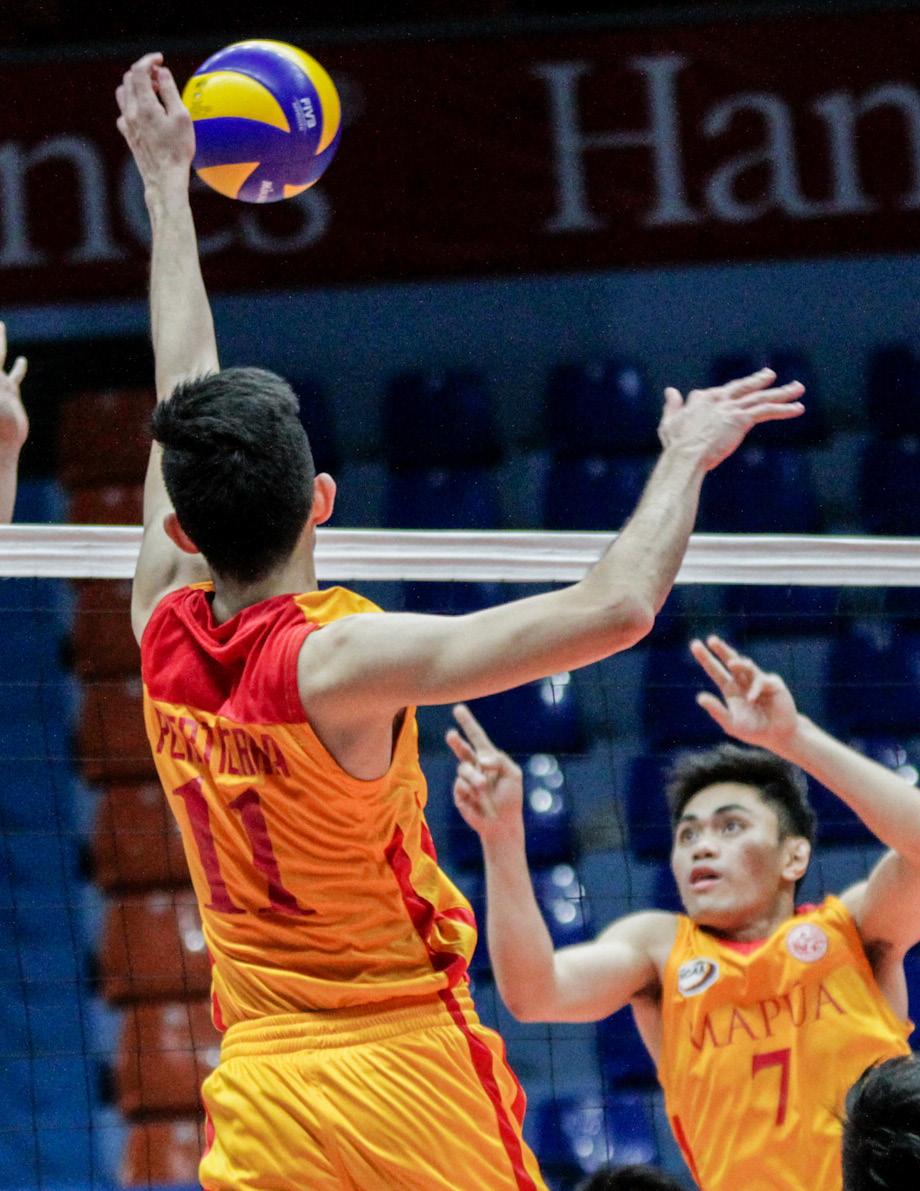
the Cheerping Cards are looking forward to soaring even higher. However, Diamante admitted that such a feat will not be a walk in the park.
“Quite slim, actually,” the analytical mentor said on his team’s chances in the next NCAA competition. “Almost all of our cheerleaders are just on their sophomore year, and we only got a few seniors left,” he added.
The Cheerping Cardinals head coach also noted that the ongoing recruitment process will greatly affect their Season 93 bid. “If we cannot get enough recruits this season, then next year might not be as good. We need to have provincial recruits soon,” Coach Diamante said.
True enough, replicating the team’s recent success will prove to be more difficult. However, despite that challenge, the Mapúa Cheerping Cardinals will certainly step up their game for next year’s road to the championship.

Dianne
Hernandez, Kyle Joshua P. Castillo & Maurine Claire F. Kim
Victory and redemption. The Mapúa Cheerping Cardinals deliver a strong finish to their NCAA 92 routine, making a surprise comeback after last year’s showing. Photo by Keith Marie R. Dela Cruz
